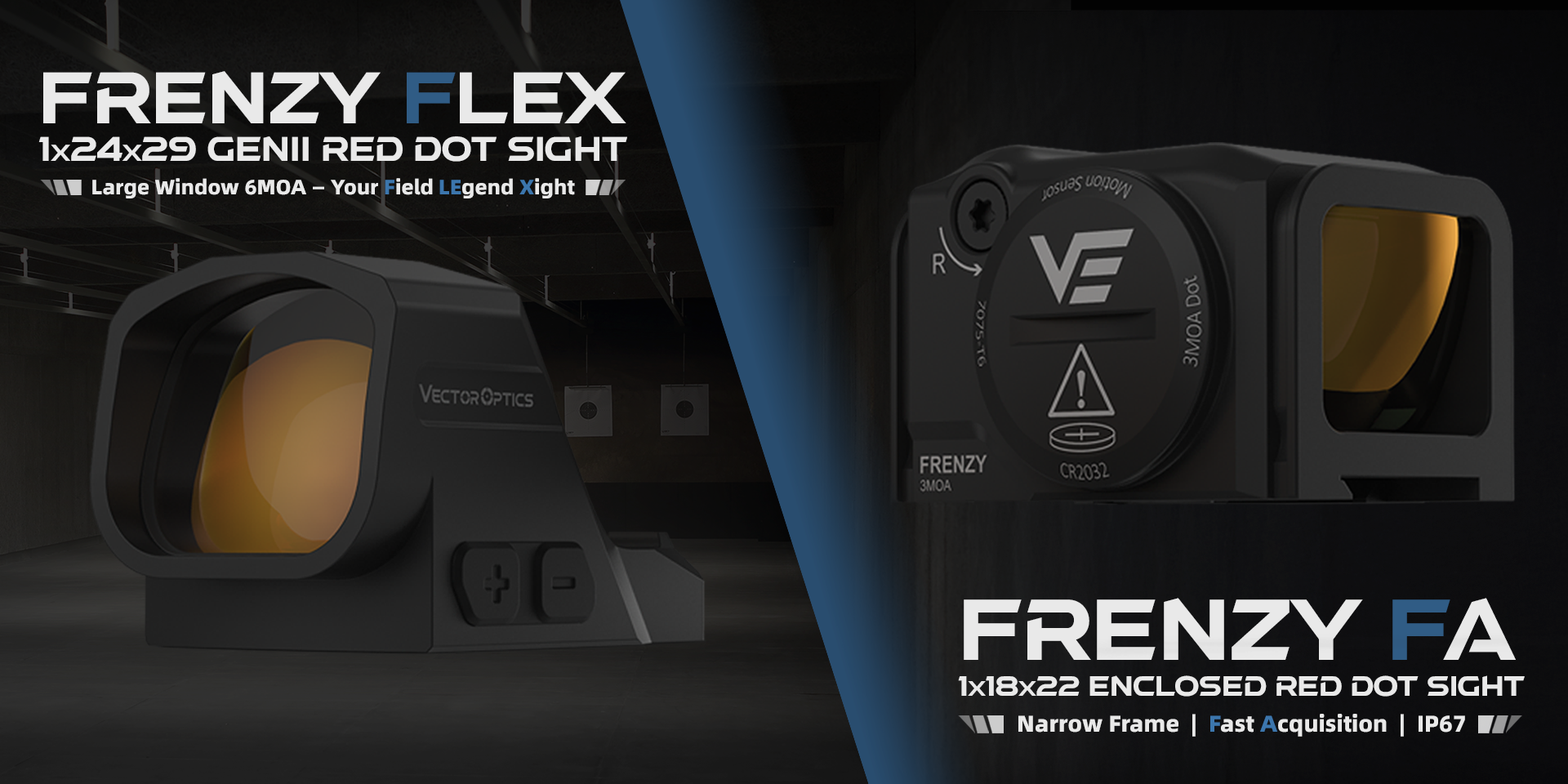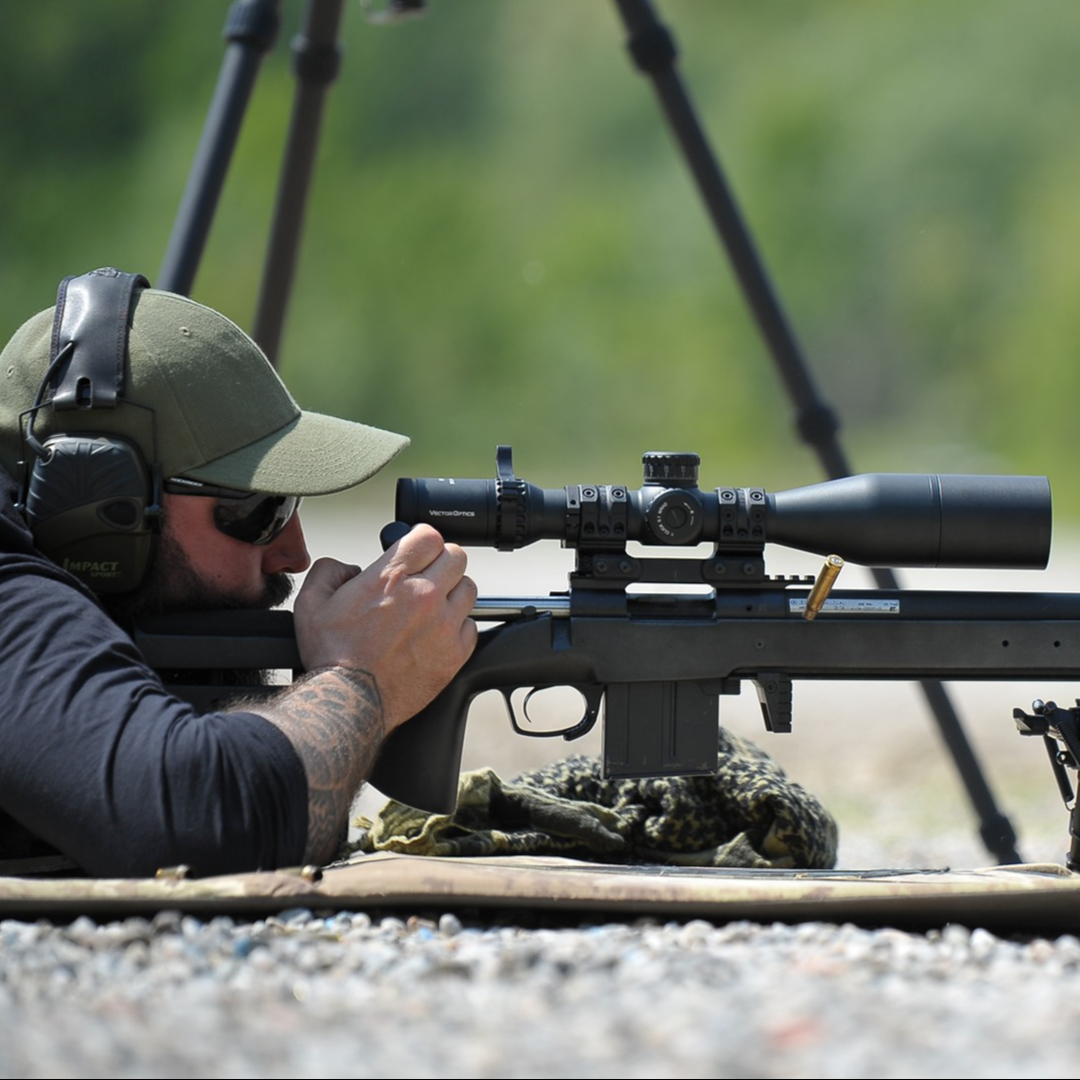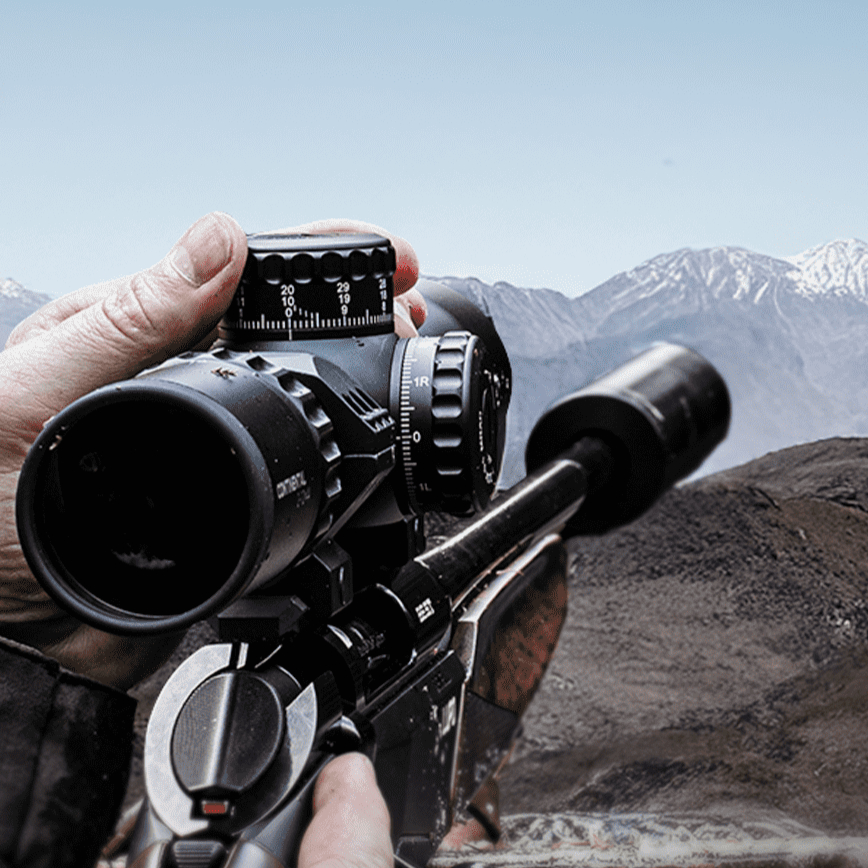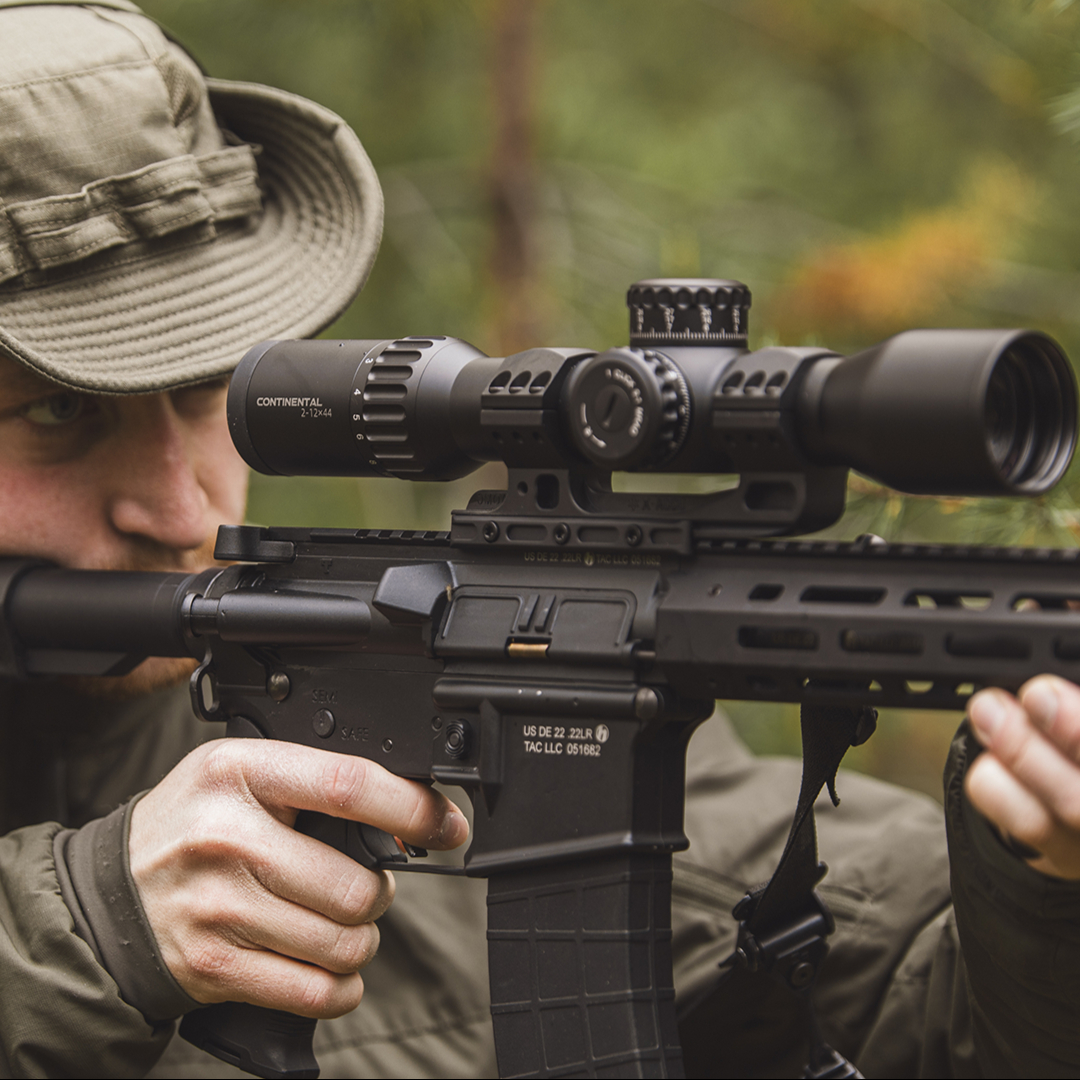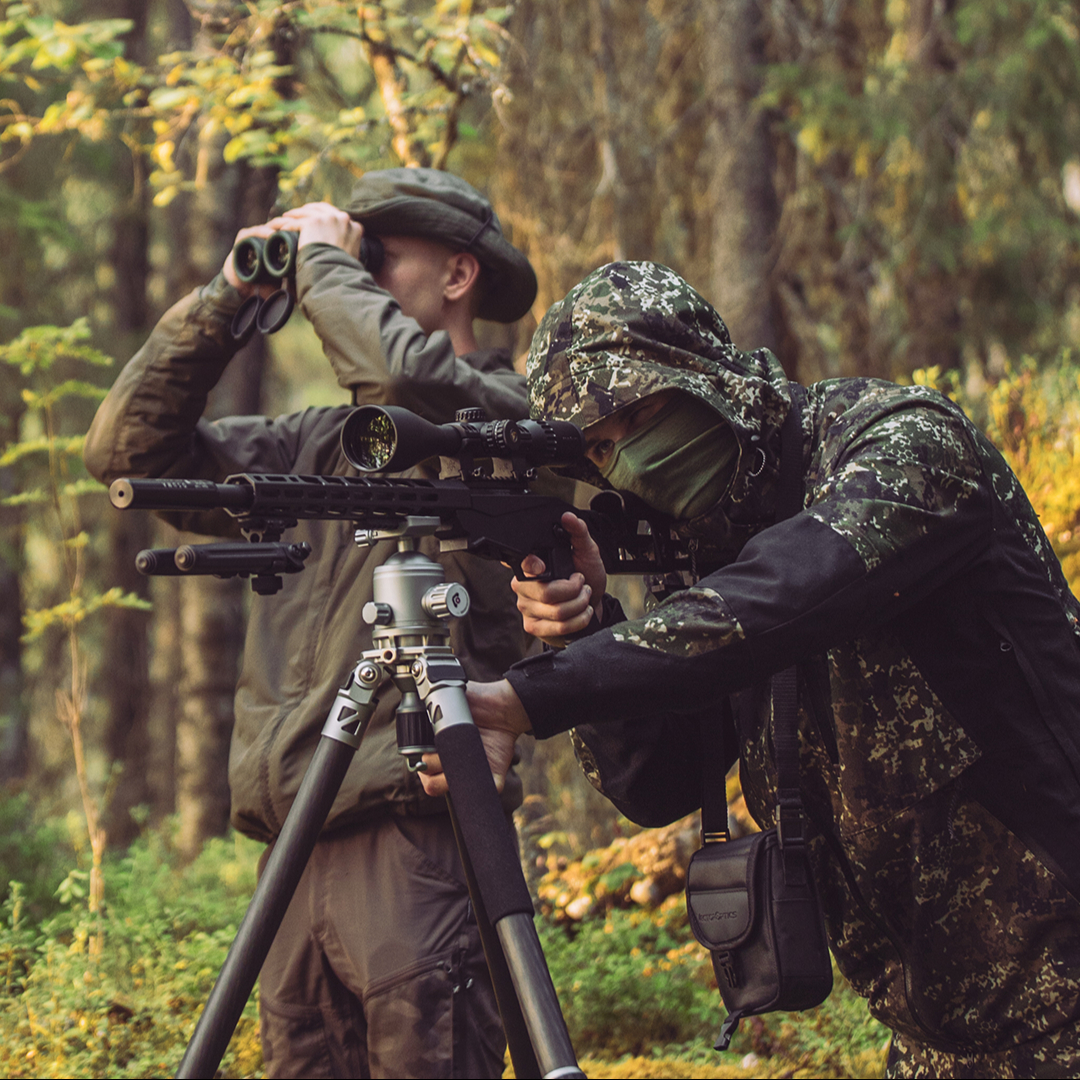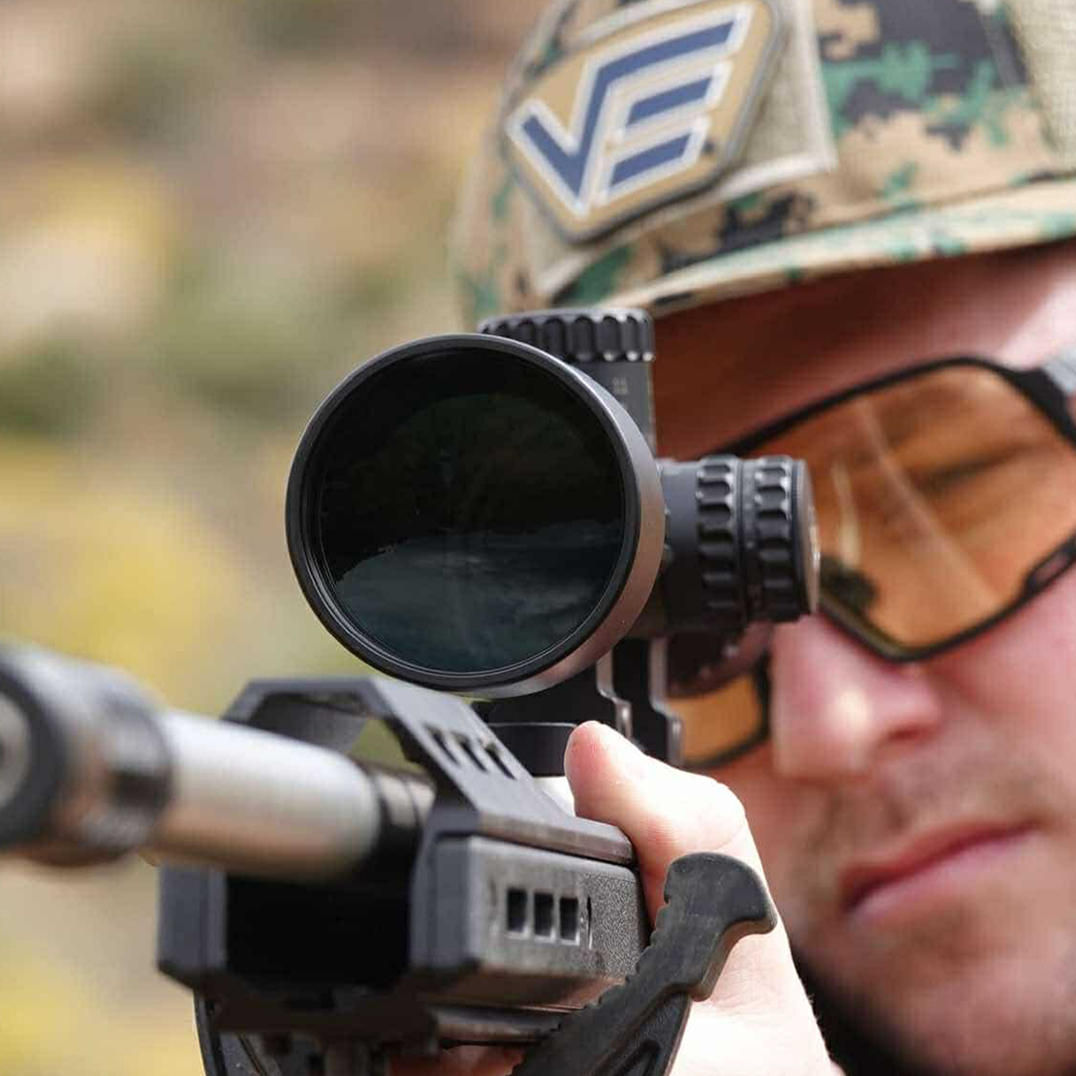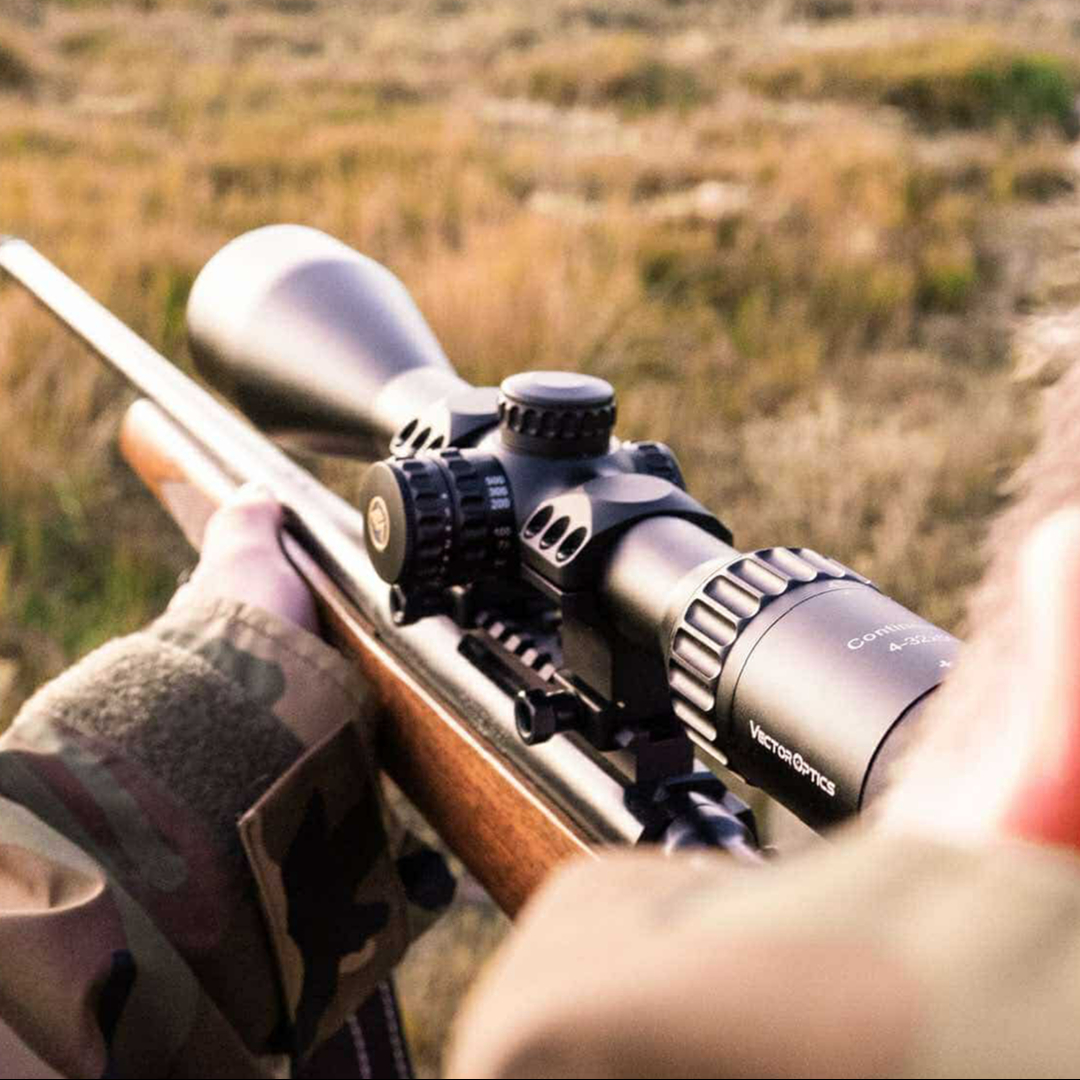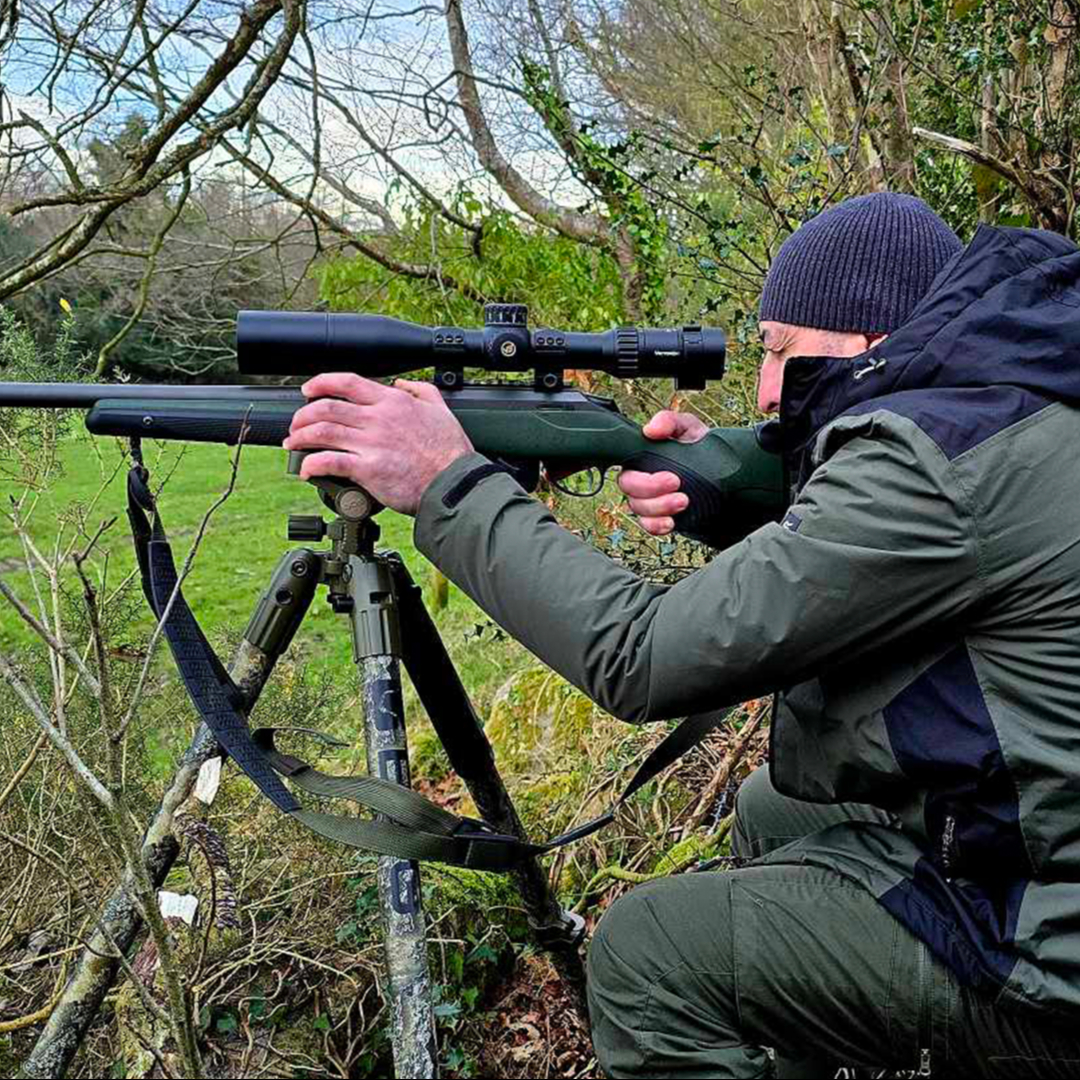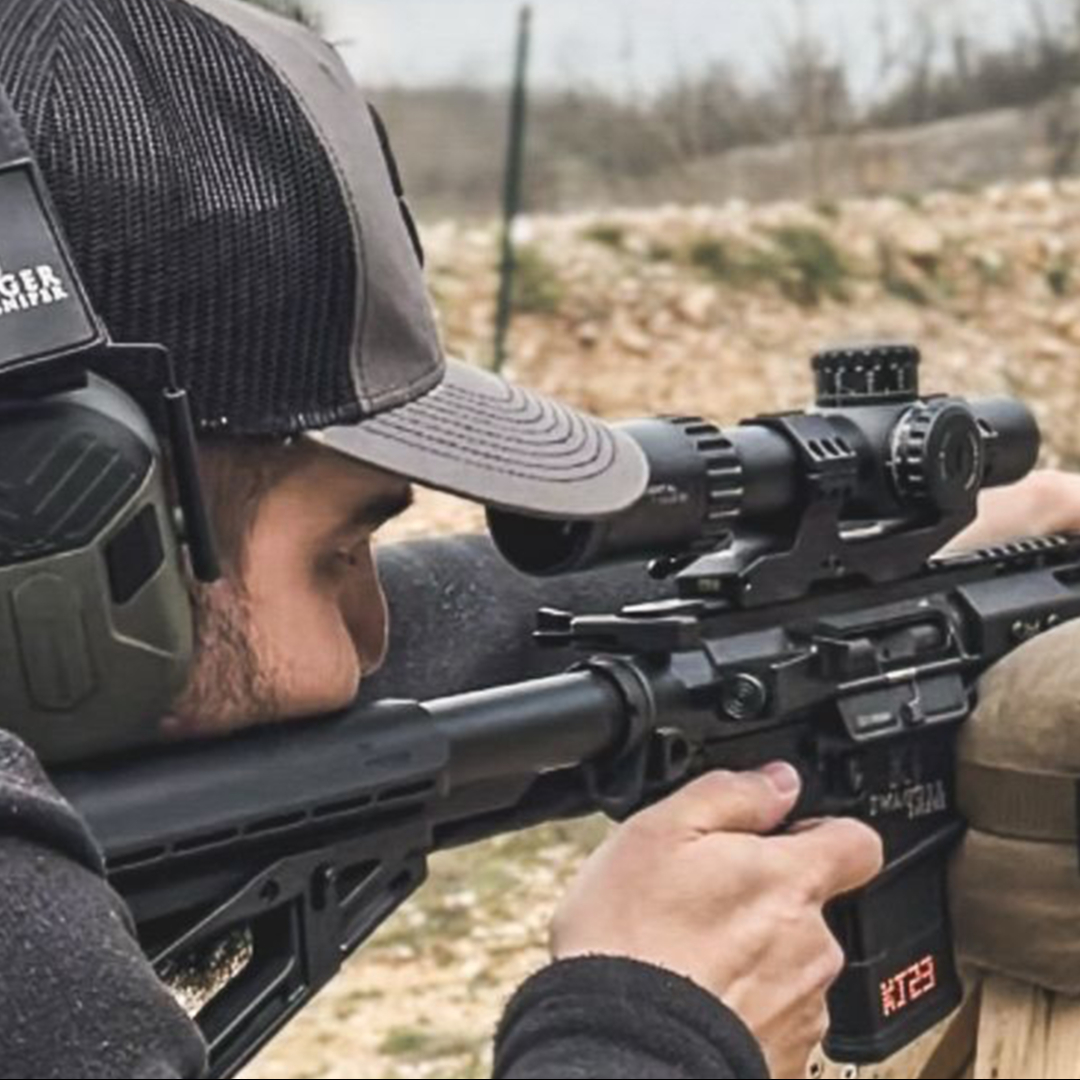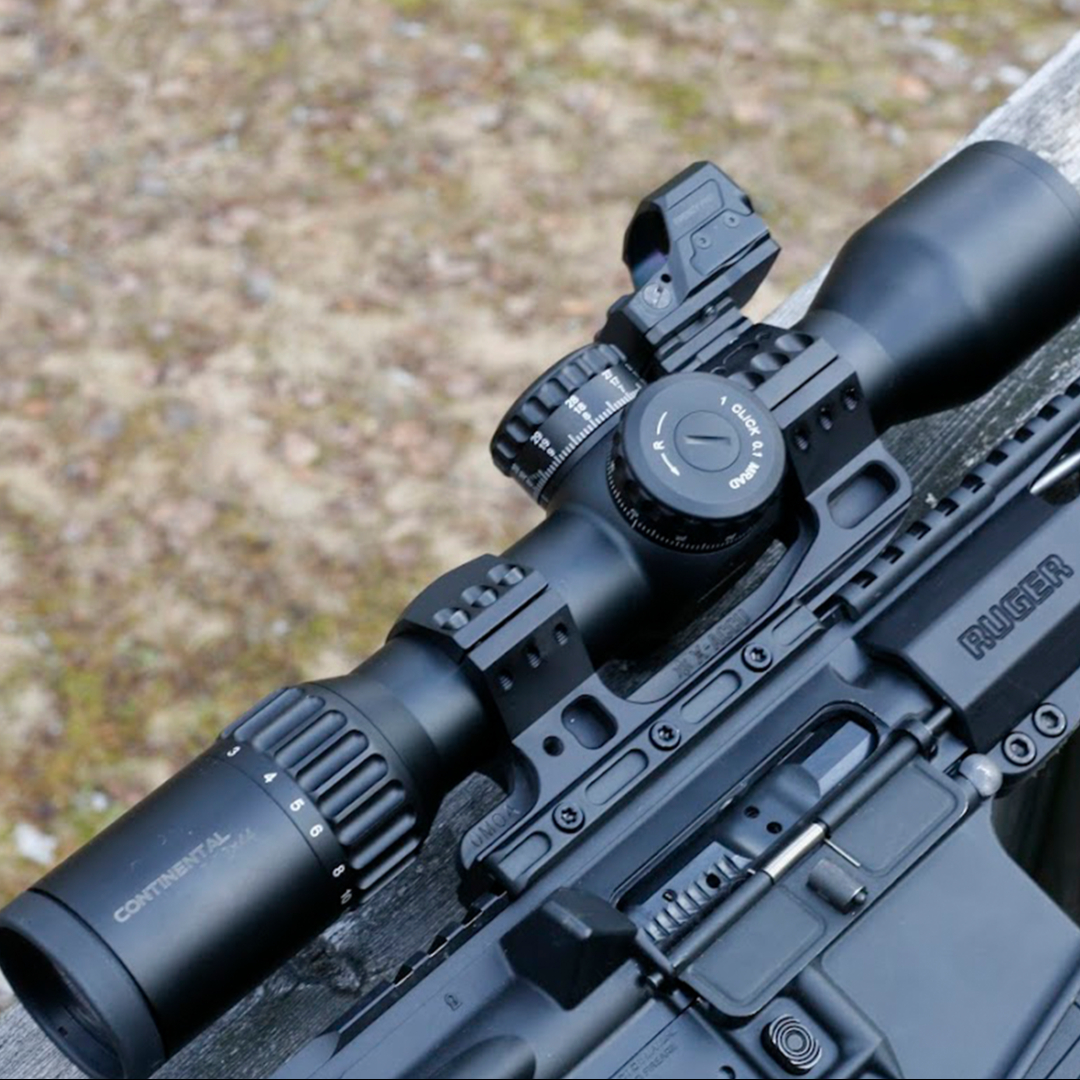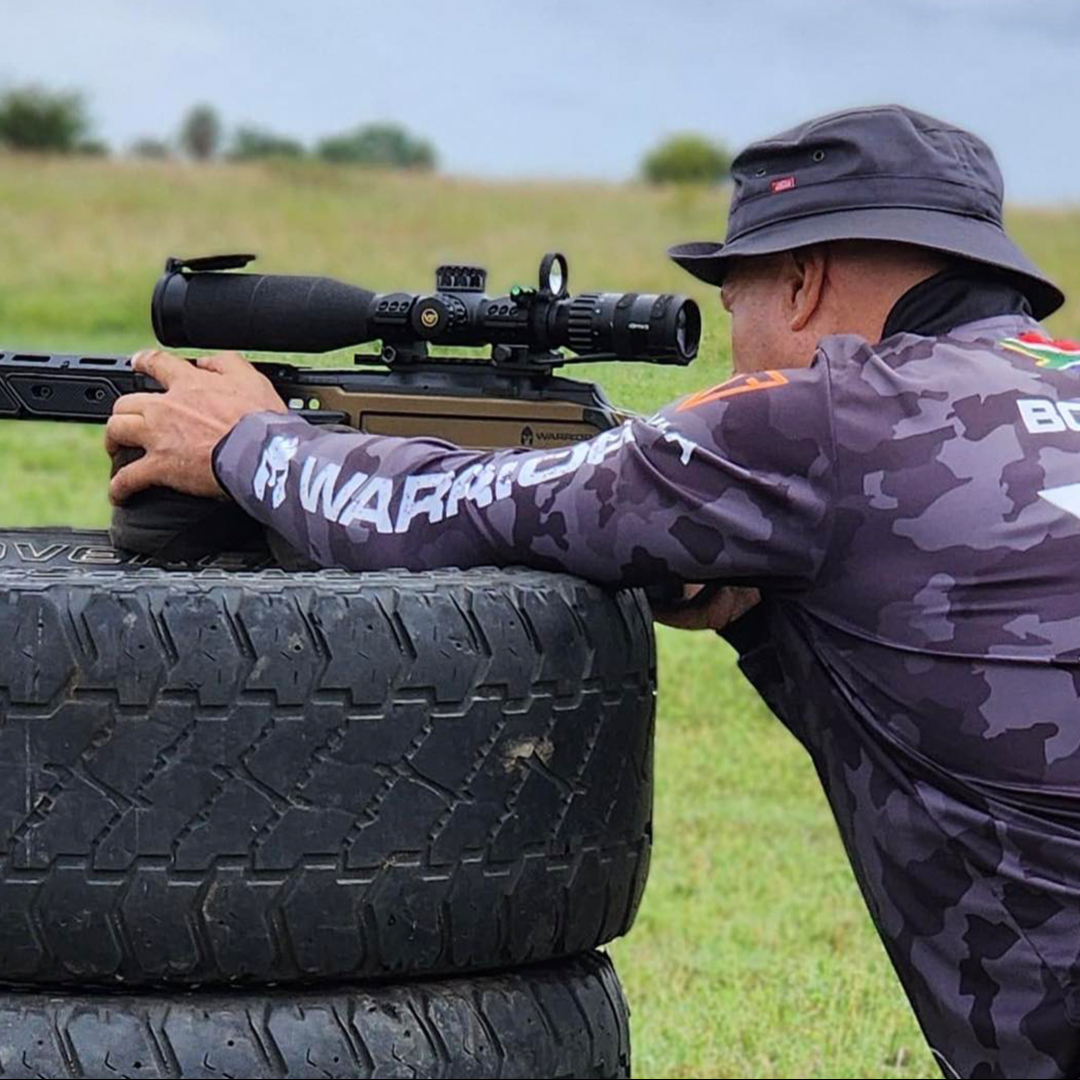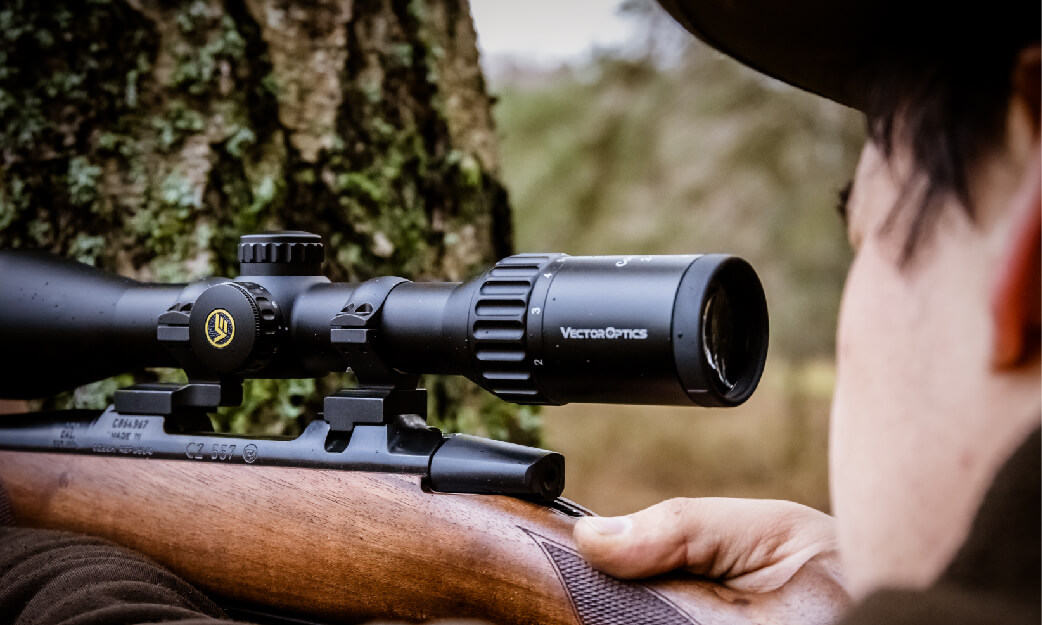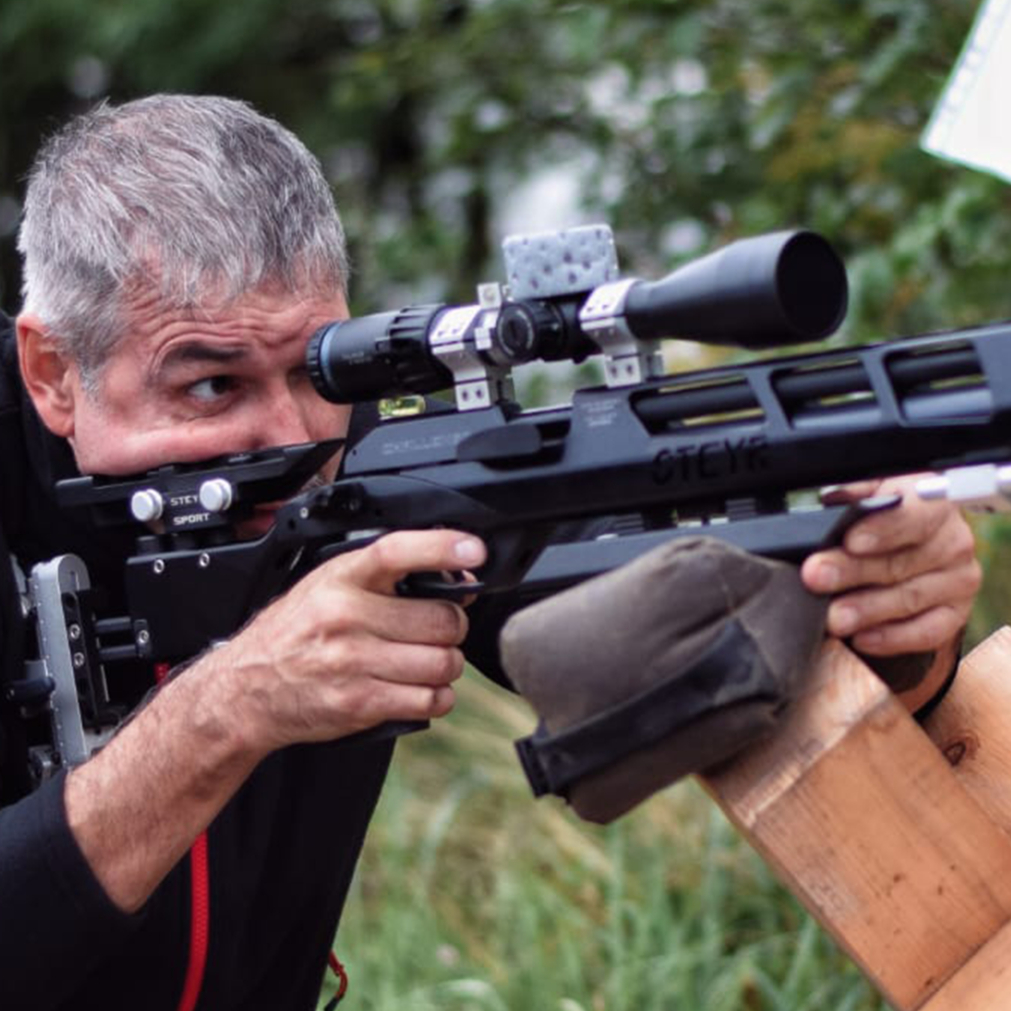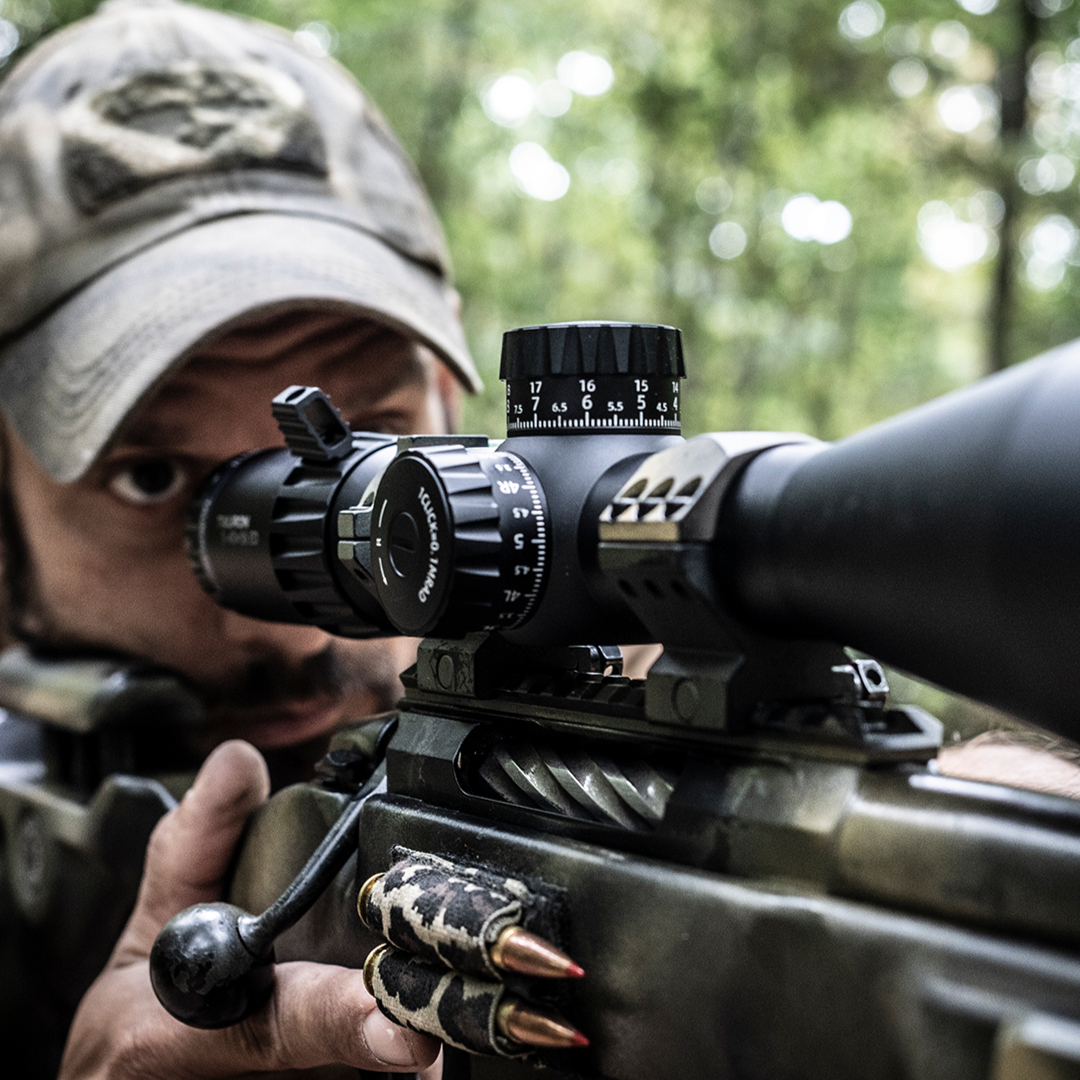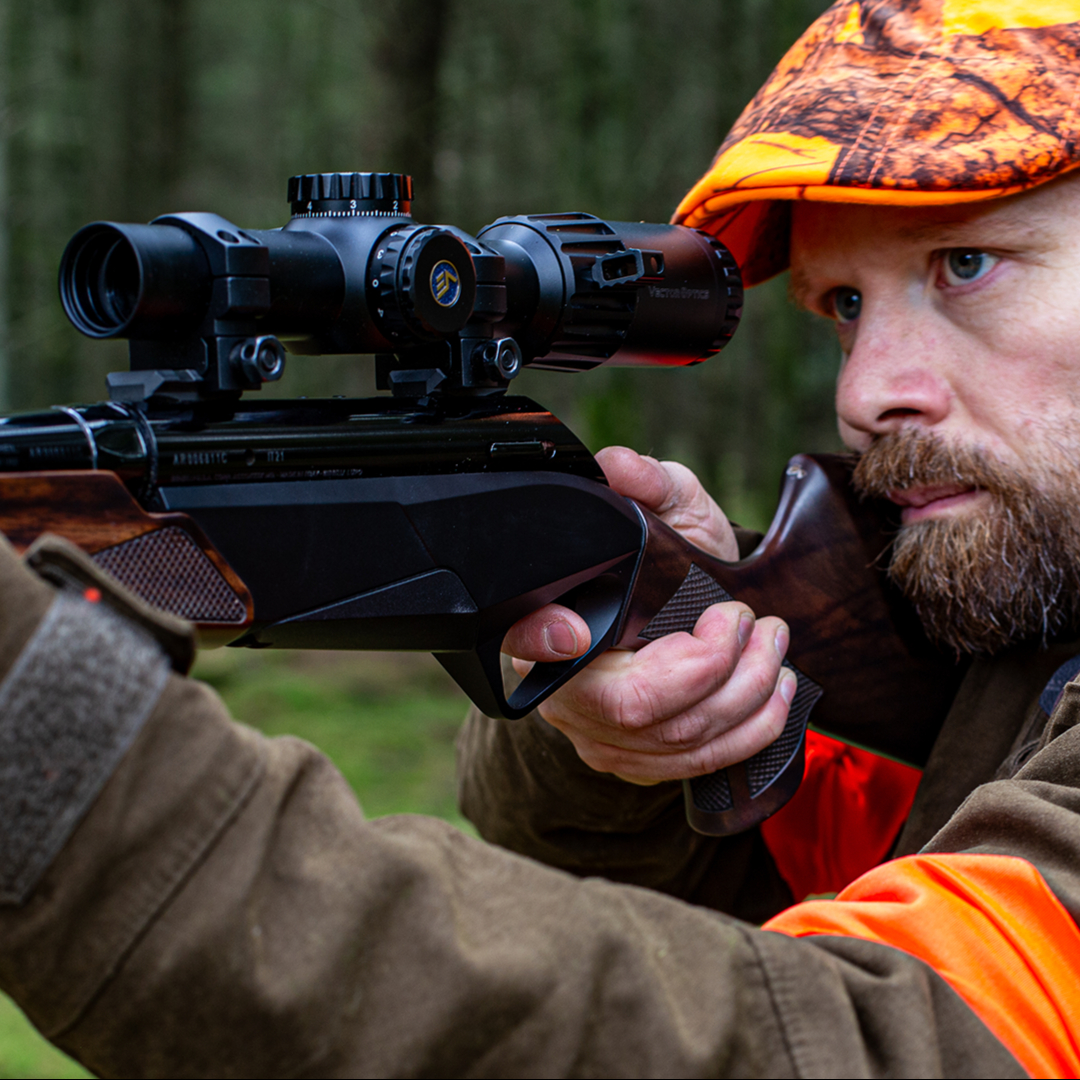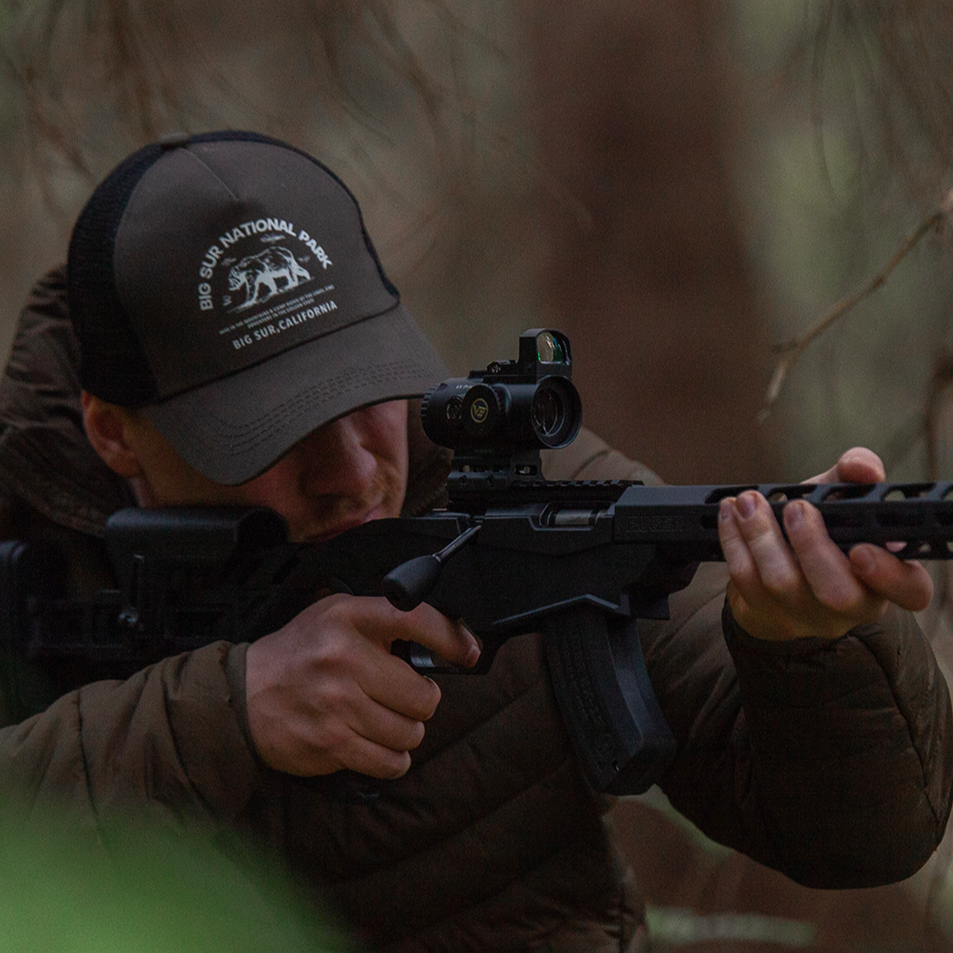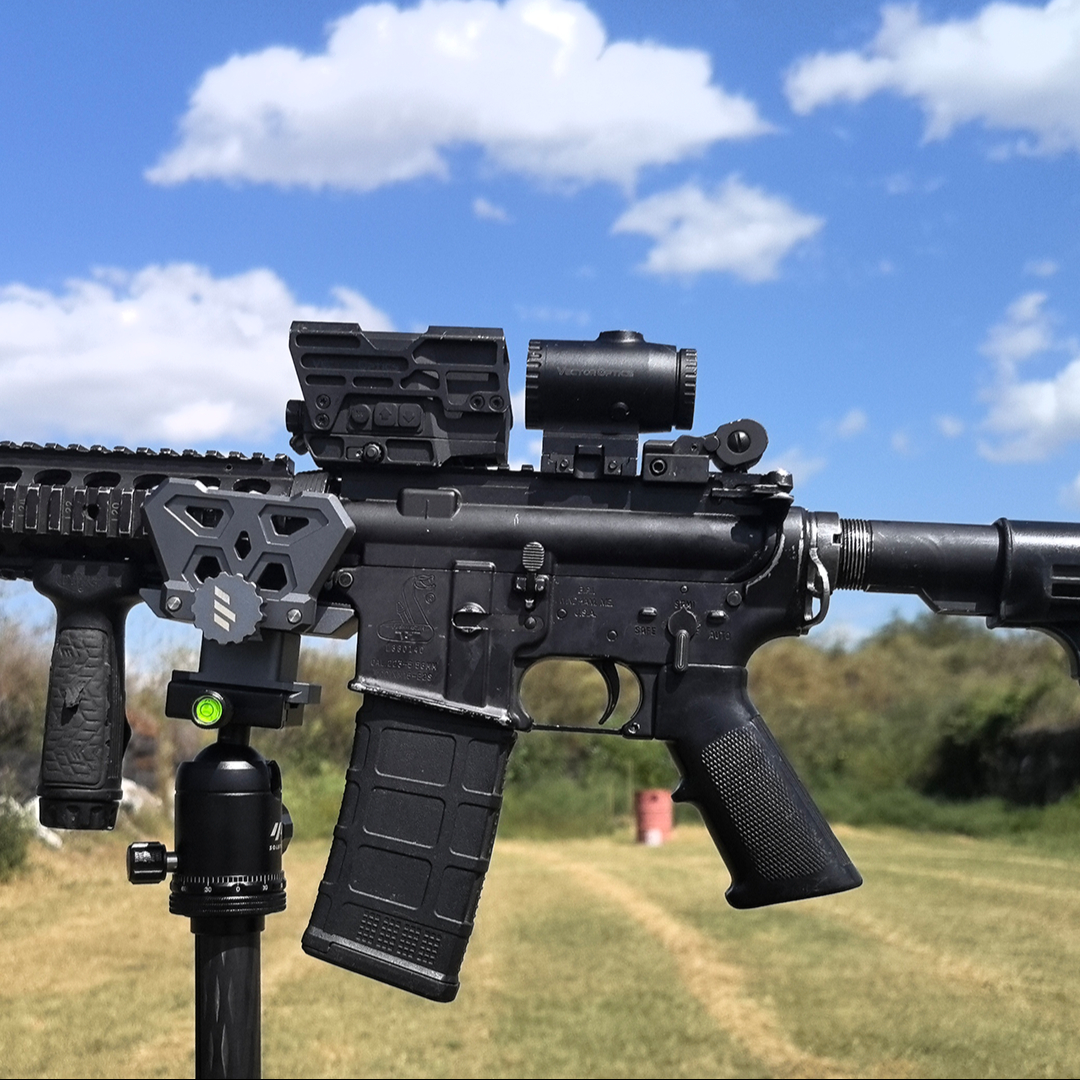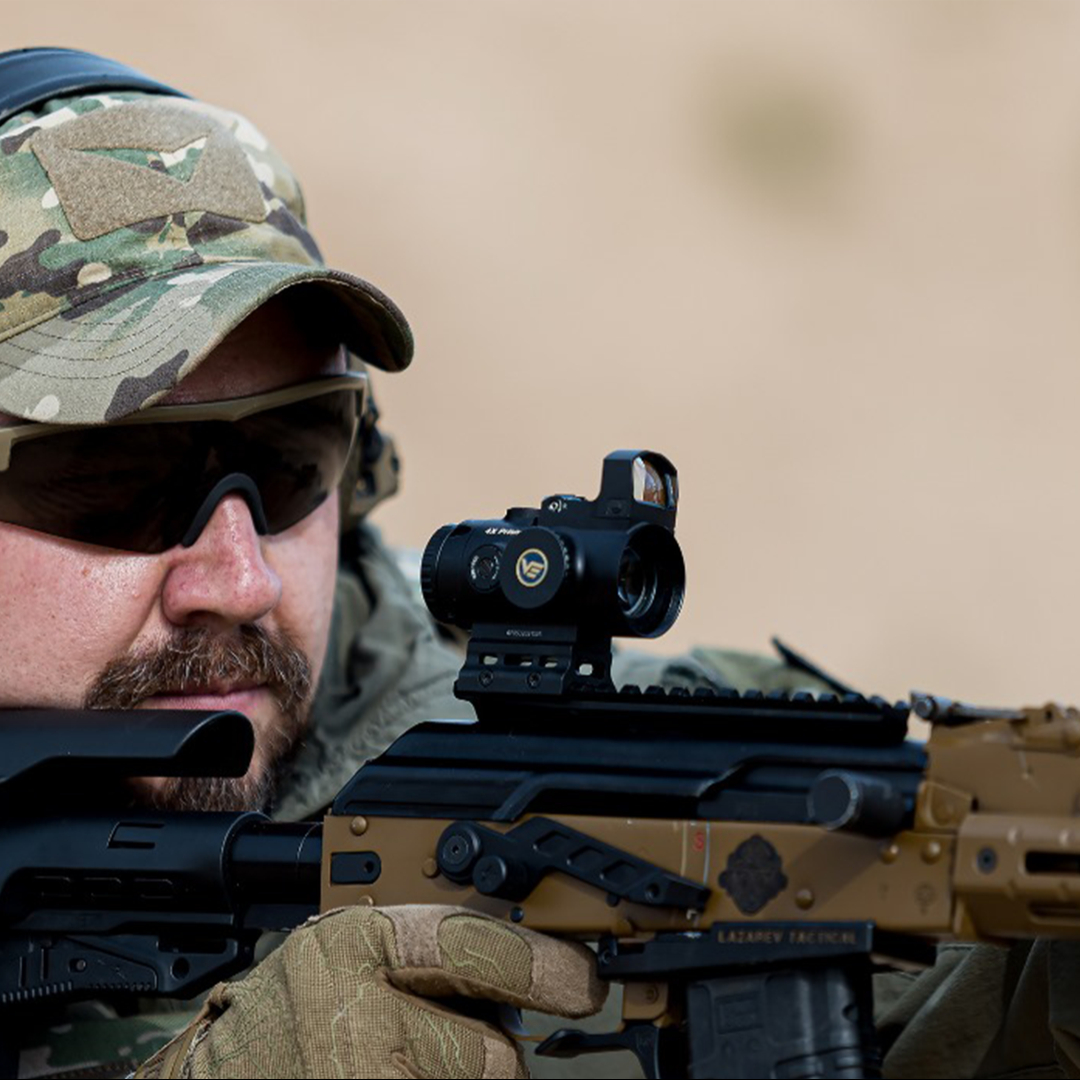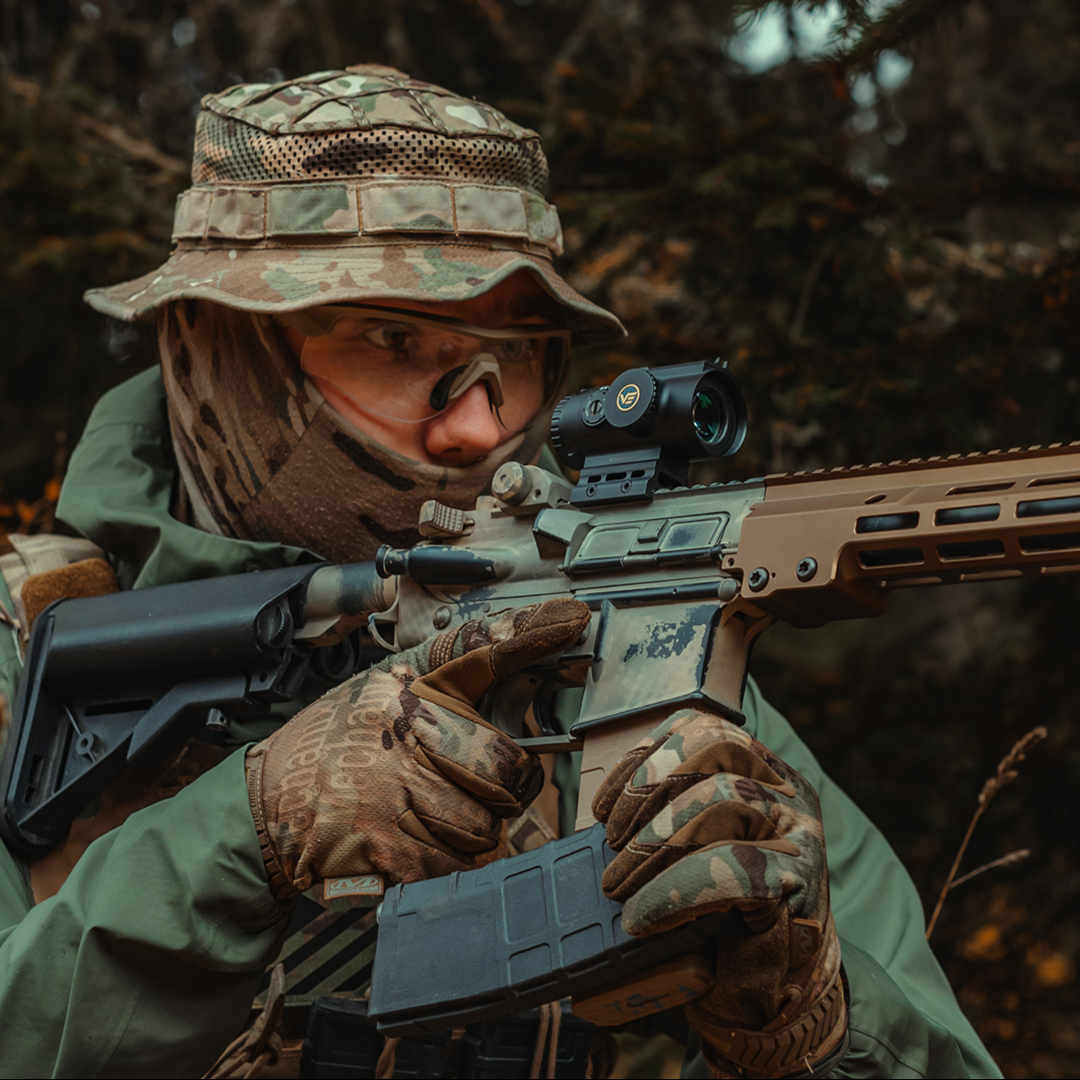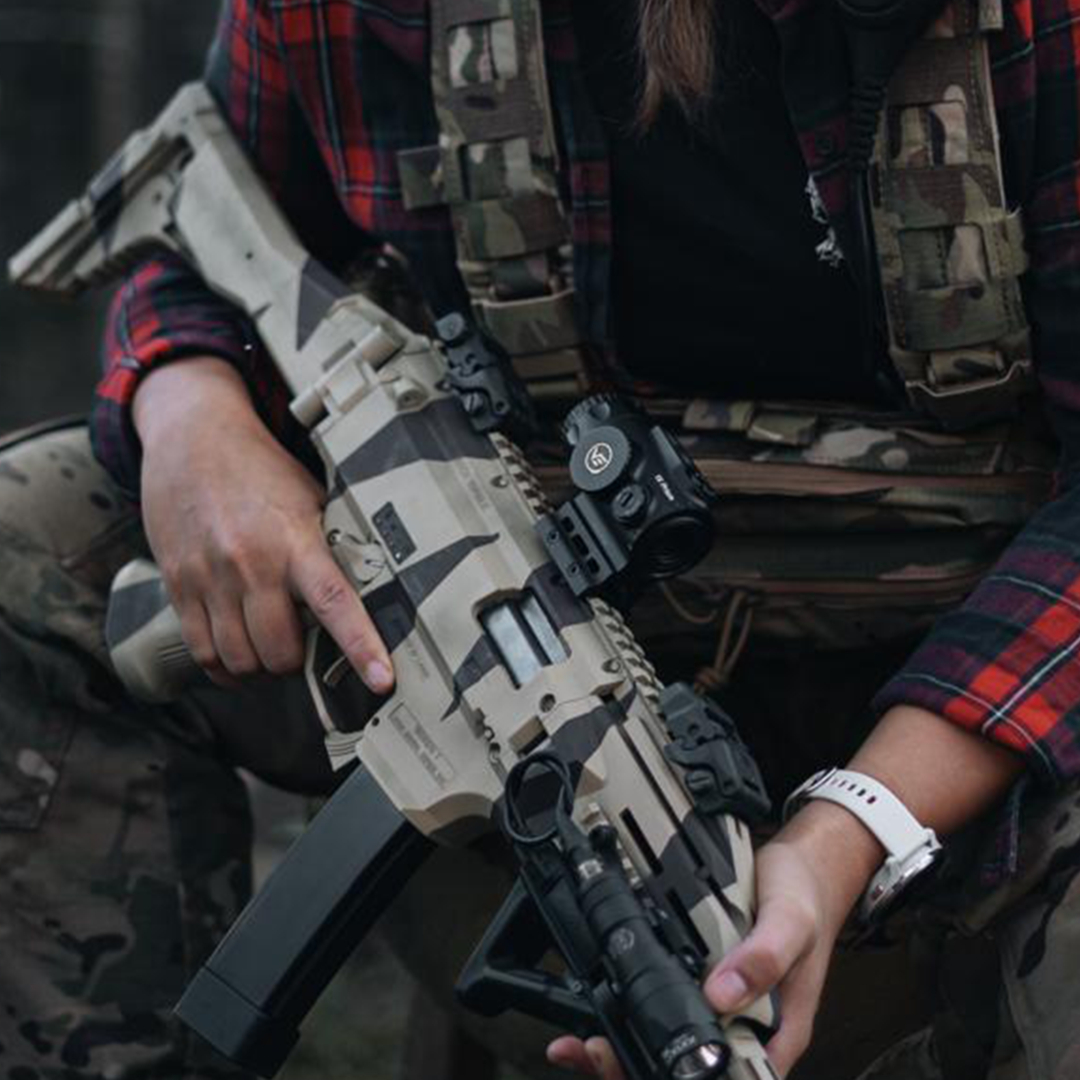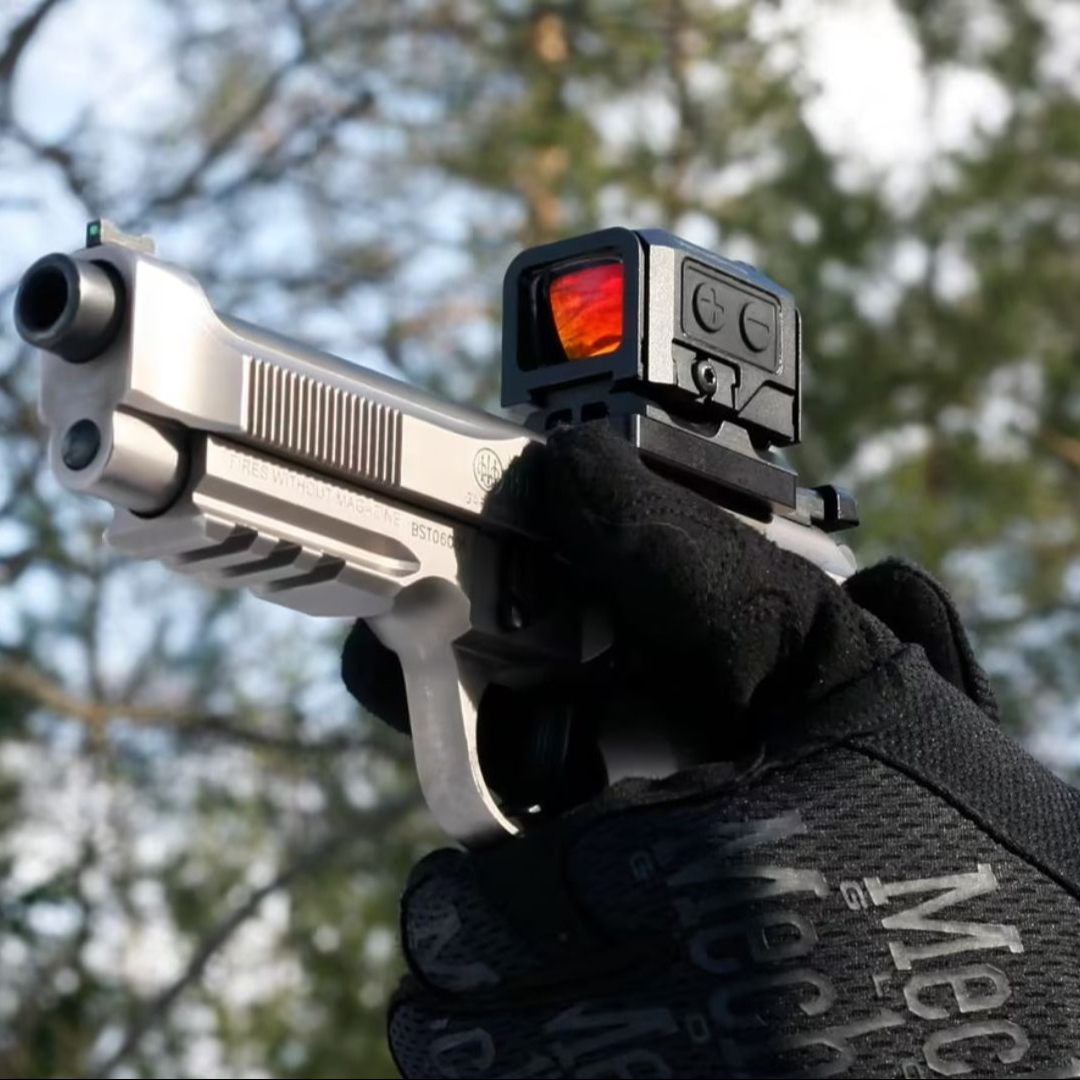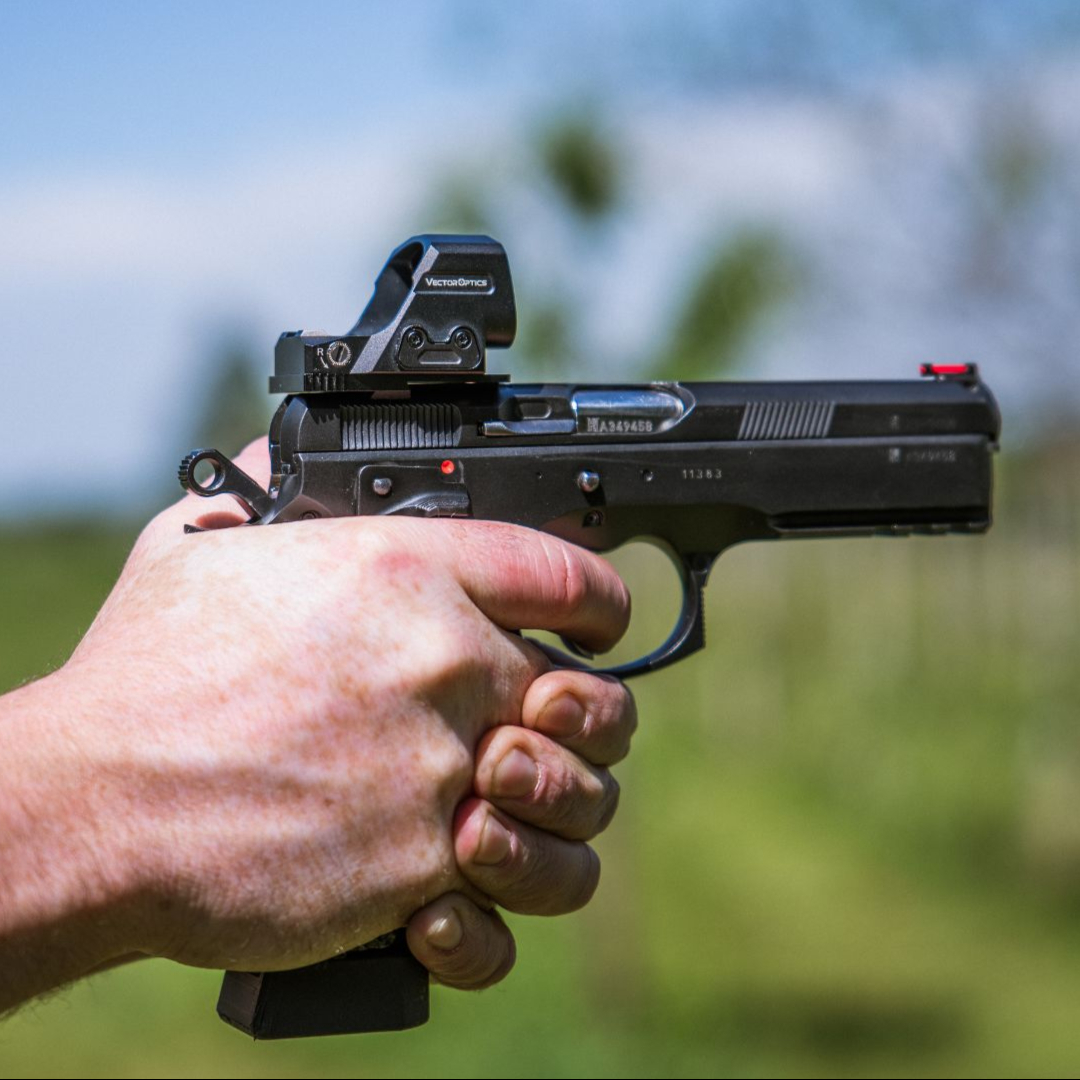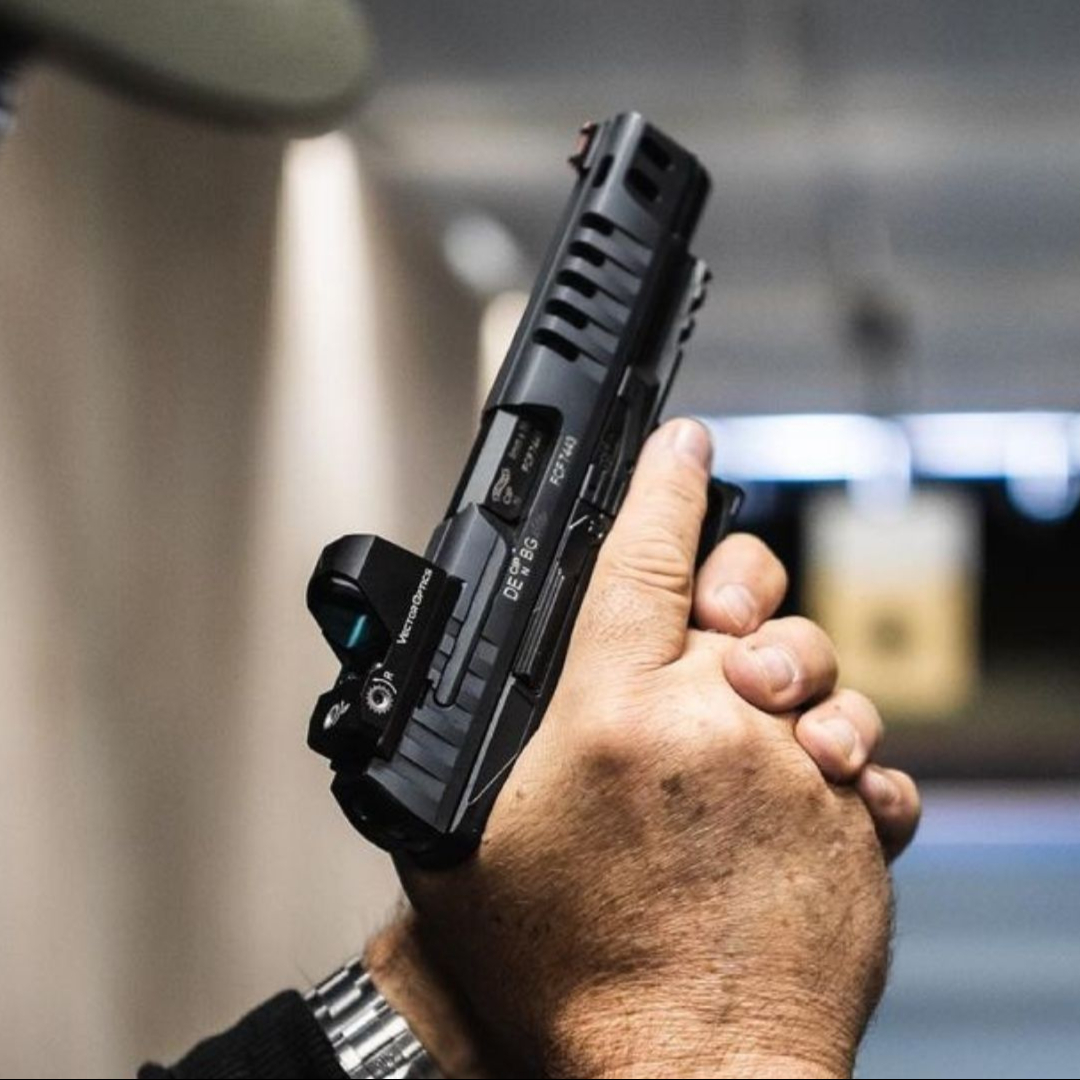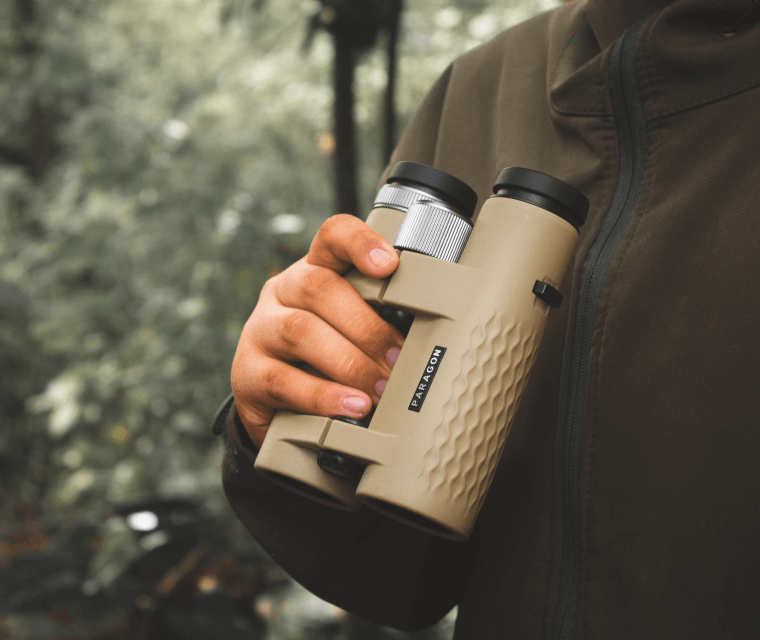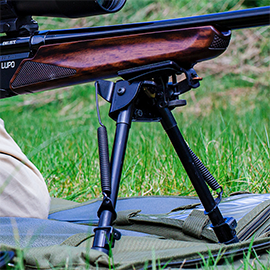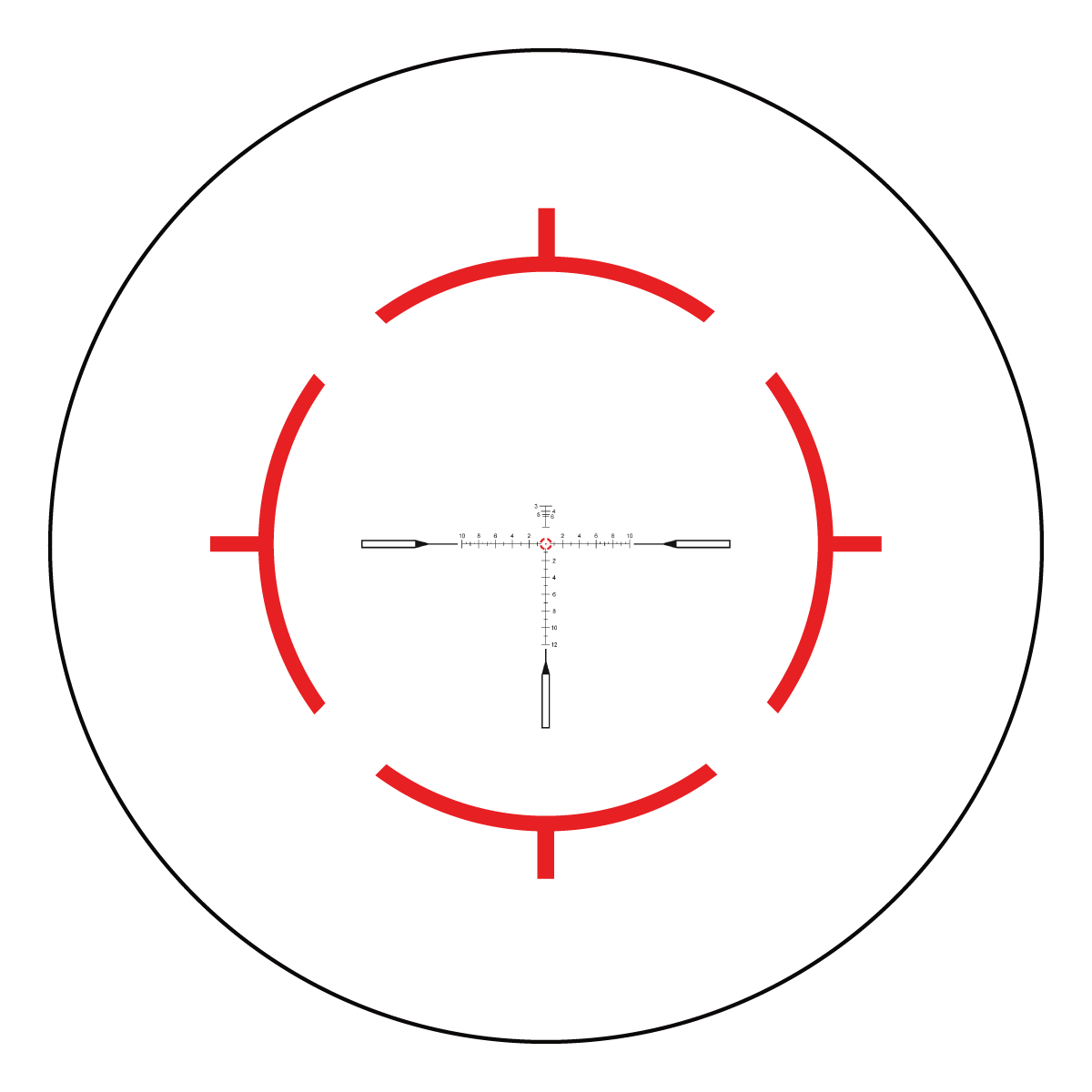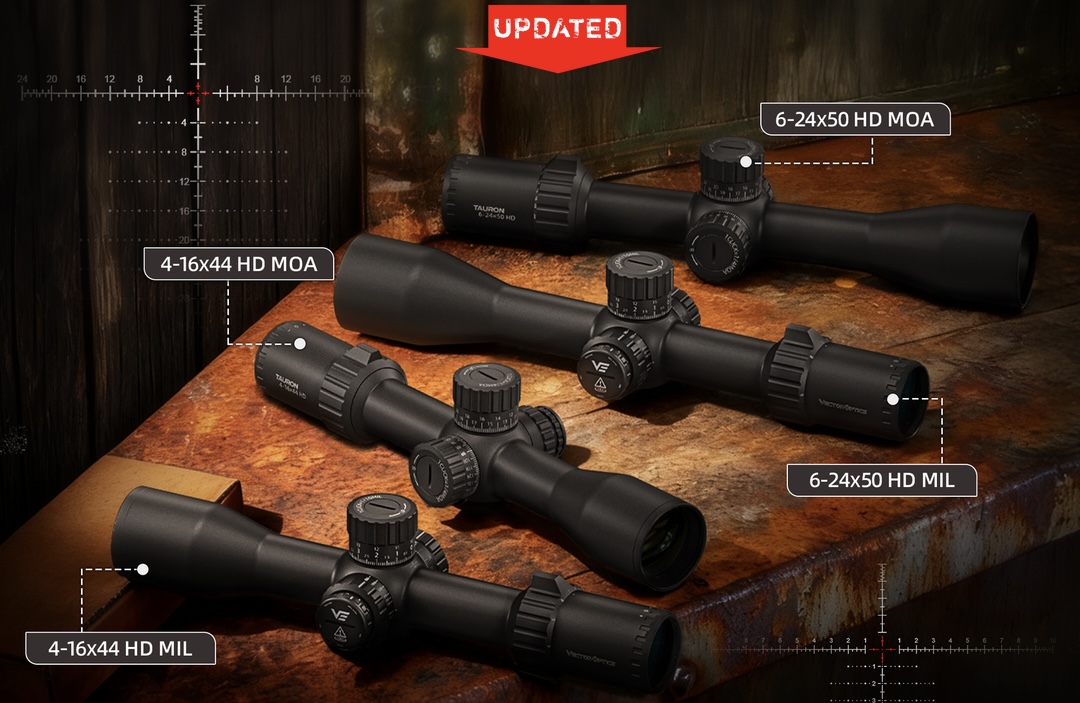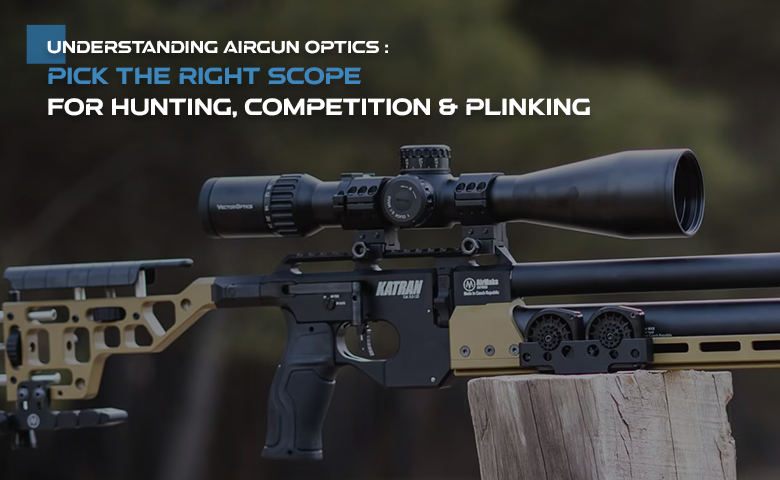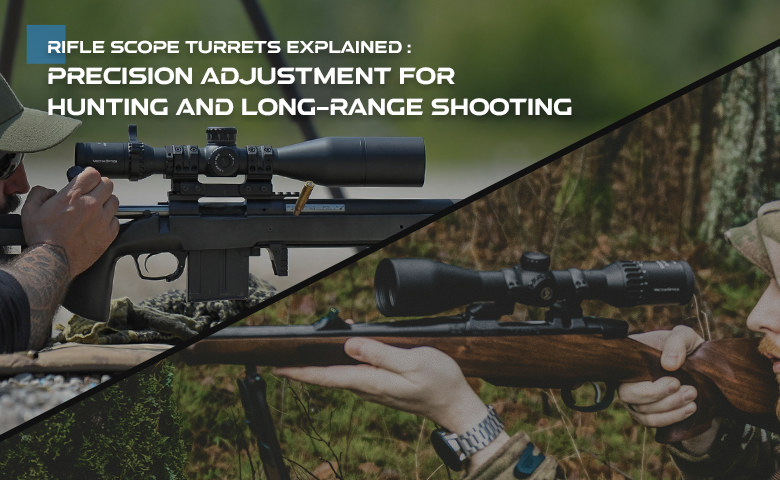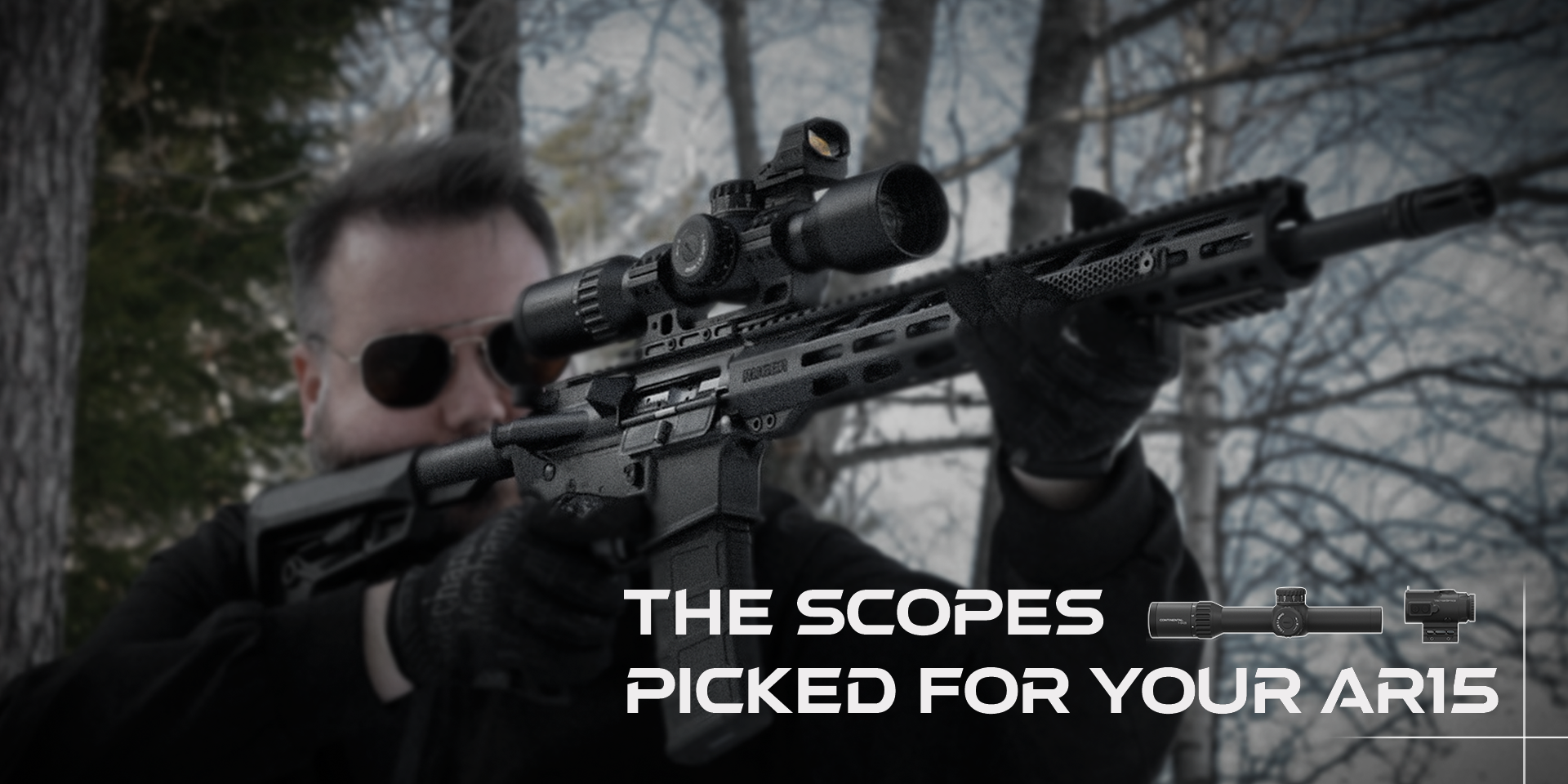The AR-15 is one of the most recognizable and widely used semi-automatic rifles in the world, popular among firearm enthusiasts, hunters, and tactical users. Modern AR-15–style rifles trace their roots back to the original ArmaLite AR-15 design and have since evolved into highly modular, versatile sporting rifles. They can be configured for a wide range of applications—from close-quarters battle and home defense to recreational shooting and long-range precision.
A standard AR-15 is typically equipped with a 16–20 inch barrel and chambered in .223 Remington or 5.56×45 NATO. It generally delivers about 4 MOA accuracy, meaning shot groups can be contained within a 4-inch circle at 100 yards. Compared to the larger AR-10, the AR-15 is significantly lighter and easier to handle, making it a practical choice for both new shooters and experienced marksmen.
To get the most out of your AR-15 and improve shooting accuracy, pairing it with a quality scope is essential. Almost all of our scopes are fully compatible with AR-15 rifles chambered in .223 Remington or 5.56×45 NATO. But with so many options available, how do you choose the right one? In this guide, we’ll walk you through the key features to consider—such as magnification, reticle type, and durability—and recommend scopes that match common shooting ranges and applications. Simply navigate to the section that best fits your needs to find the right option for you.
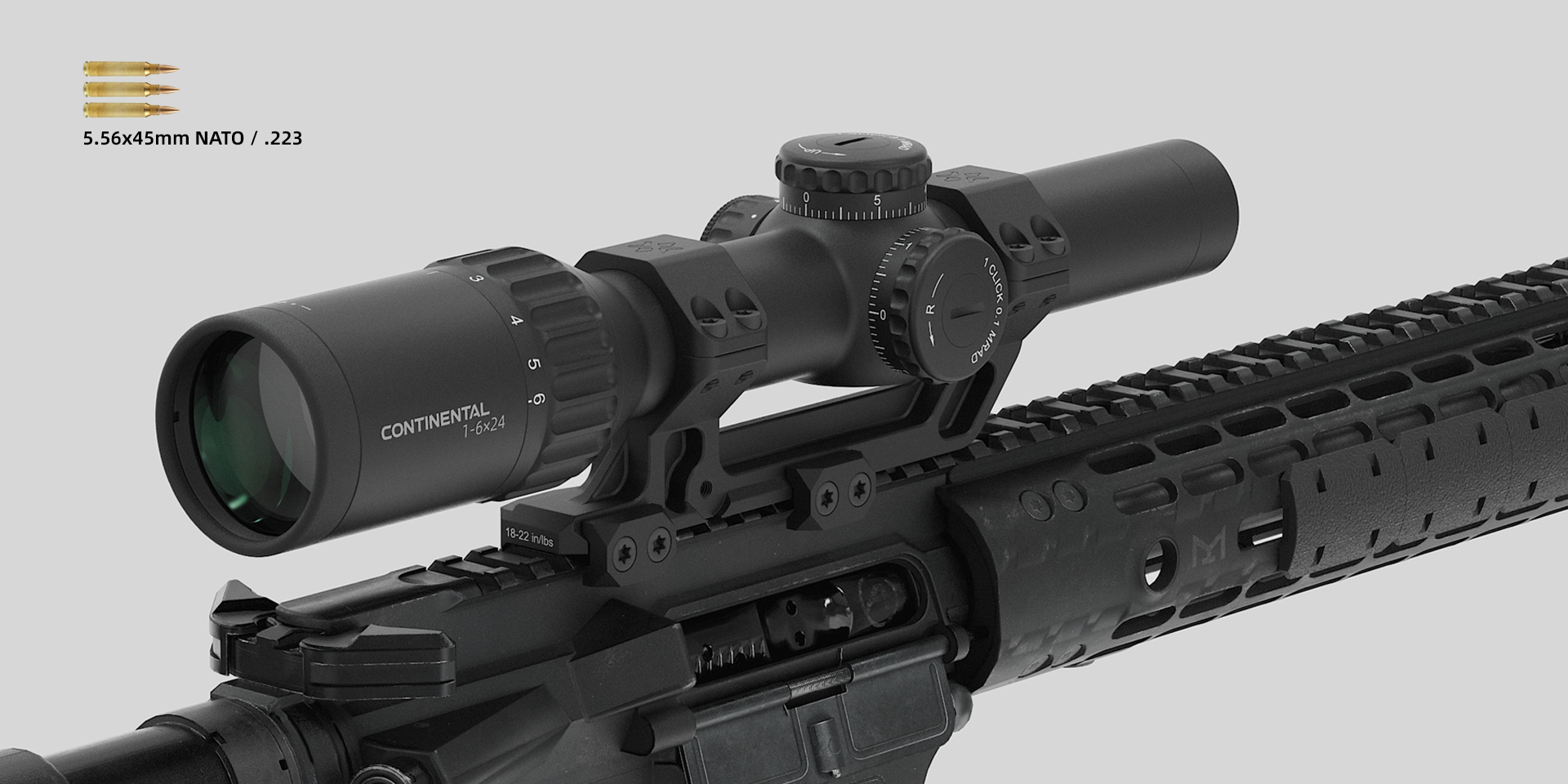
Target Shooting
For target shooting, most shooters typically engage within 200 yards, making an LPVO a practical choice. In recent years, 1-8x and 1-10x LPVOs have become more popular than the traditional 1-6x models, offering extra magnification for added versatility. Both FFP and SFP designs are solid options for practice, depending on your personal preference.
Our Constantine series LPVOs come with capped turrets and a zero-stop function for precise and reliable adjustments. Reticle options are available to match your shooting needs:
●Etched reticles are well-suited for heavy-recoil firearms and allow for more complex patterns, providing greater precision in target shooting.
●Fiber reticles excel in visibility under various lighting conditions. For example, the G4 pattern features a fiber center dot, making target acquisition faster and clearer in changing environments.
For a deeper comparison of fiber and etched reticles, check out our previous blog post where we break down their pros and cons.
Constantine 1-10x24 (SCOC-27)
Constantine 1-8x24 (SCFF-32)
Reticle for practicing and plinking at home.
●0.3 MIL center dot – provides precise aiming. (At 100m = 3cm, at 25m = 7.5mm, at 10m = 3mm).
●2 MIL diameter center ring with 11 illumination levels – ensures quick target acquisition and ranging. The illuminated red ring helps draw your eye to the center instantly.
●Christmas tree pattern – allows fast follow-up corrections and holdovers for improved shooting efficiency.
●G4 design – optimized for rapid target acquisition, naturally guiding your focus to the center.
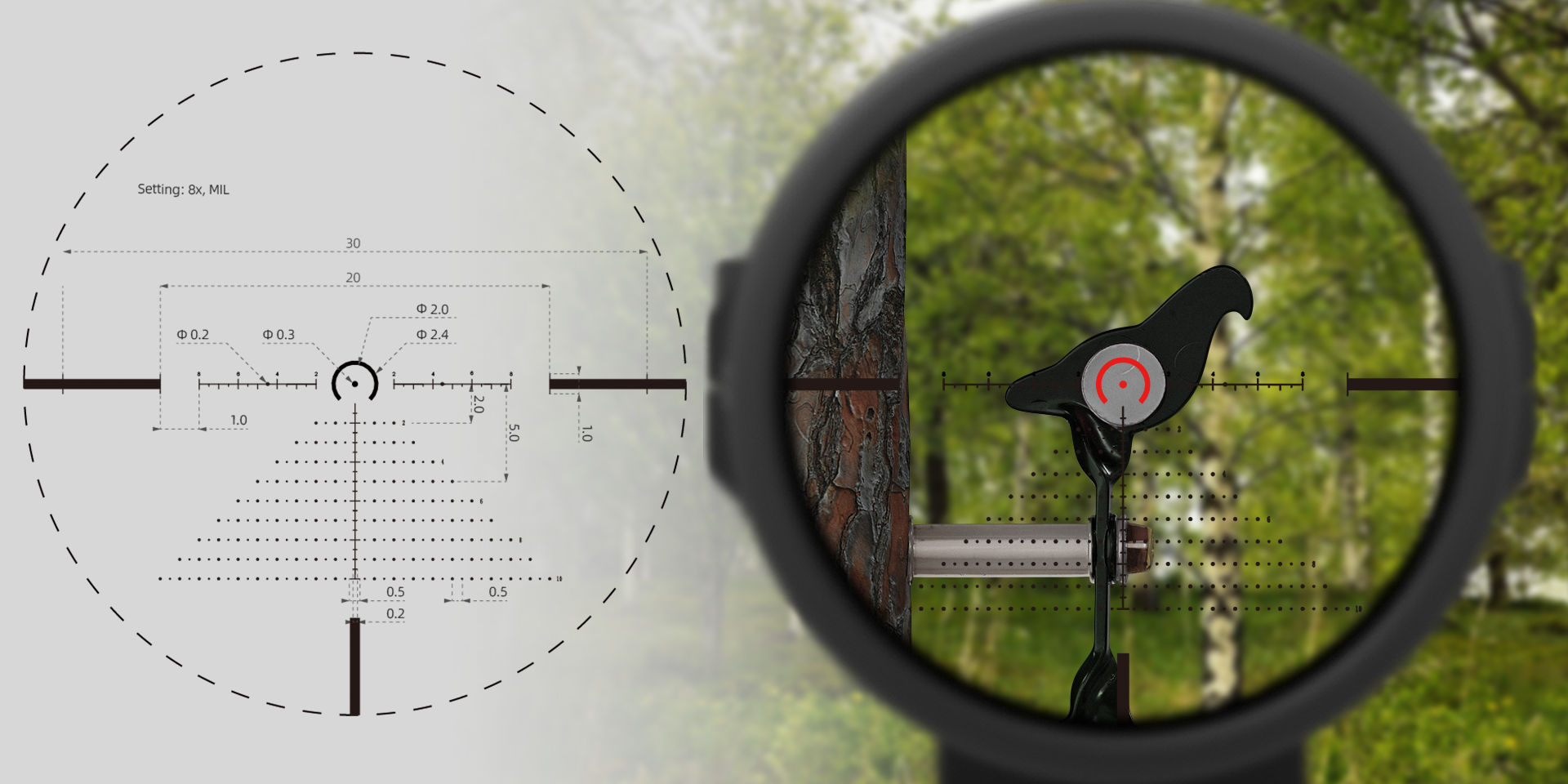
If you prefer to play higher power, we would recommend our veyron series to you.
Here, I recommend the scope with the MPR-V10 reticle, an excellent choice for both plinking and target shooting.
●0.18 MIL center dot – ensures precise aiming (1.8 cm at 100 m, 0.18 cm at 10 m).
●Christmas tree pattern – supports quick follow-up corrections and holdovers.
●MIL-dot reticle – can be used for fast ranging and distance estimation.
SCOM-46 Veyron Plus 10x30 Zero
●This model features a fixed magnification design. If you’d like to learn more about the advantages, check out our previous blog post.
●It also offers zero eye relief, enabling fast target acquisition without the need to adjust your head position.
SCOM-40 3-12x44
●If you prefer adjustable magnification, I recommen Veyron 3-12x44, offering flexibility for different shooting distances and scenarios.
Small game hunting
For small game hunting, we recommend using an LPVO (Low Power Variable Optic) with a simple reticle, which allows for quick target acquisition and ease of use. When hunting in forests or scrubland, where you may need to track moving predators, there’s always a risk of accidental turret movement. To prevent this, capped turrets are a practical choice. A zero-stop function is also valuable, as it lets you return to your pre-set zero point quickly and confidently. In addition, a 30mm tube provides a greater elevation adjustment range, while finer click values allow for more precise adjustments.
Since small game hunting usually takes place at close range, image clarity is not always the highest priority. That said, a crystal-clear and vivid sight picture can greatly enhance your overall hunting experience. If image quality is less critical for your needs, and you’d like to keep costs down, we also offer budget-friendly options that still deliver reliable performance.
All of the scopes listed below feature a 30mm tube, capped turrets, and a zero-stop function, paired with a G4 reticle.
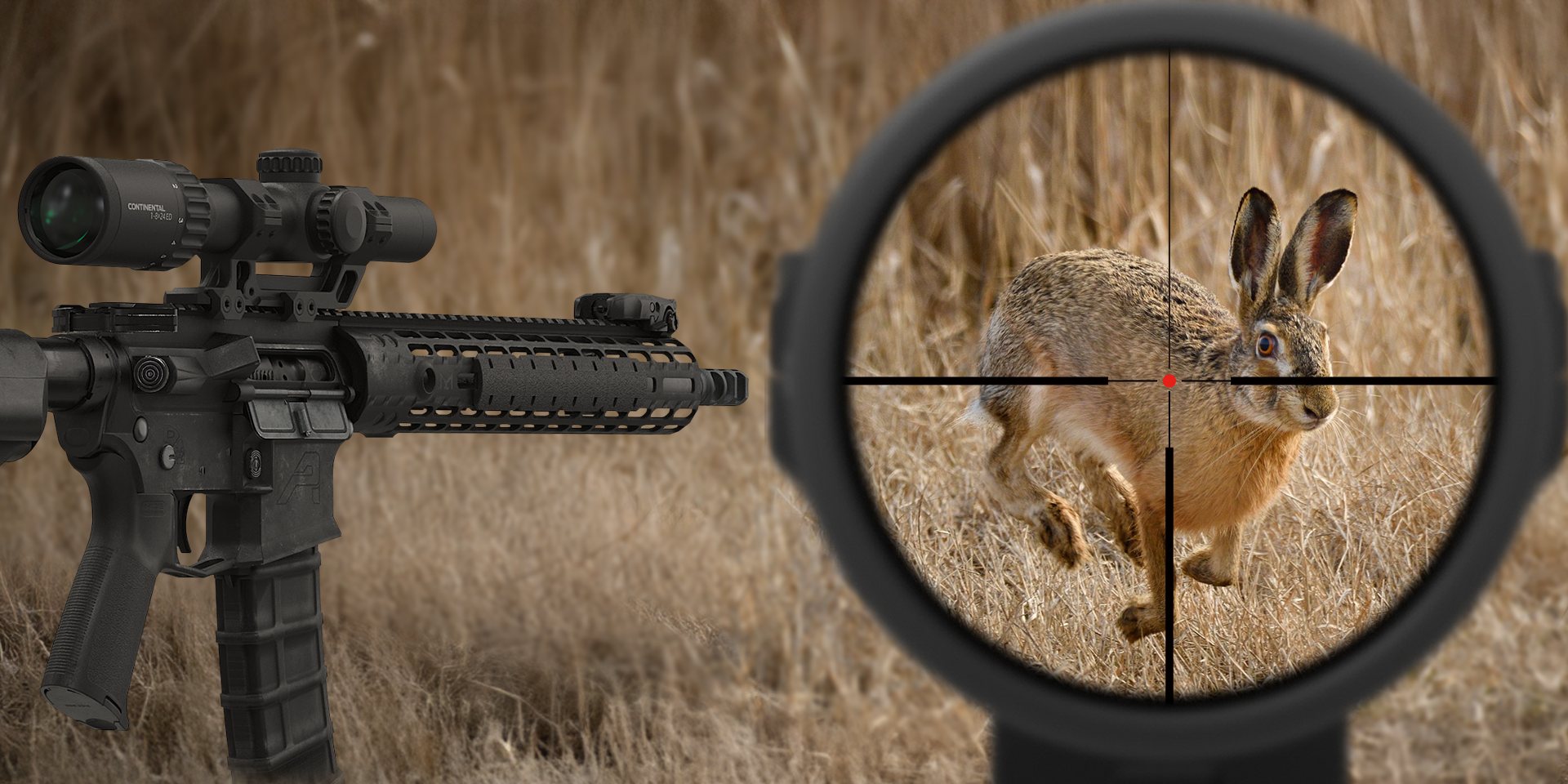
Varmint hunting
For varmint hunting, which usually takes place between 100 and 300 yards, we recommend an MPVO with high-quality lenses. Our Continental series is a strong choice, offering excellent clarity and precision. Depending on your shooting style, the G4 reticle provides quick target acquisition, while a BDC reticle allows you to engage targets at multiple distances without adjusting the turret. With a BDC reticle, you can estimate range and take rapid, accurate shots with confidence.
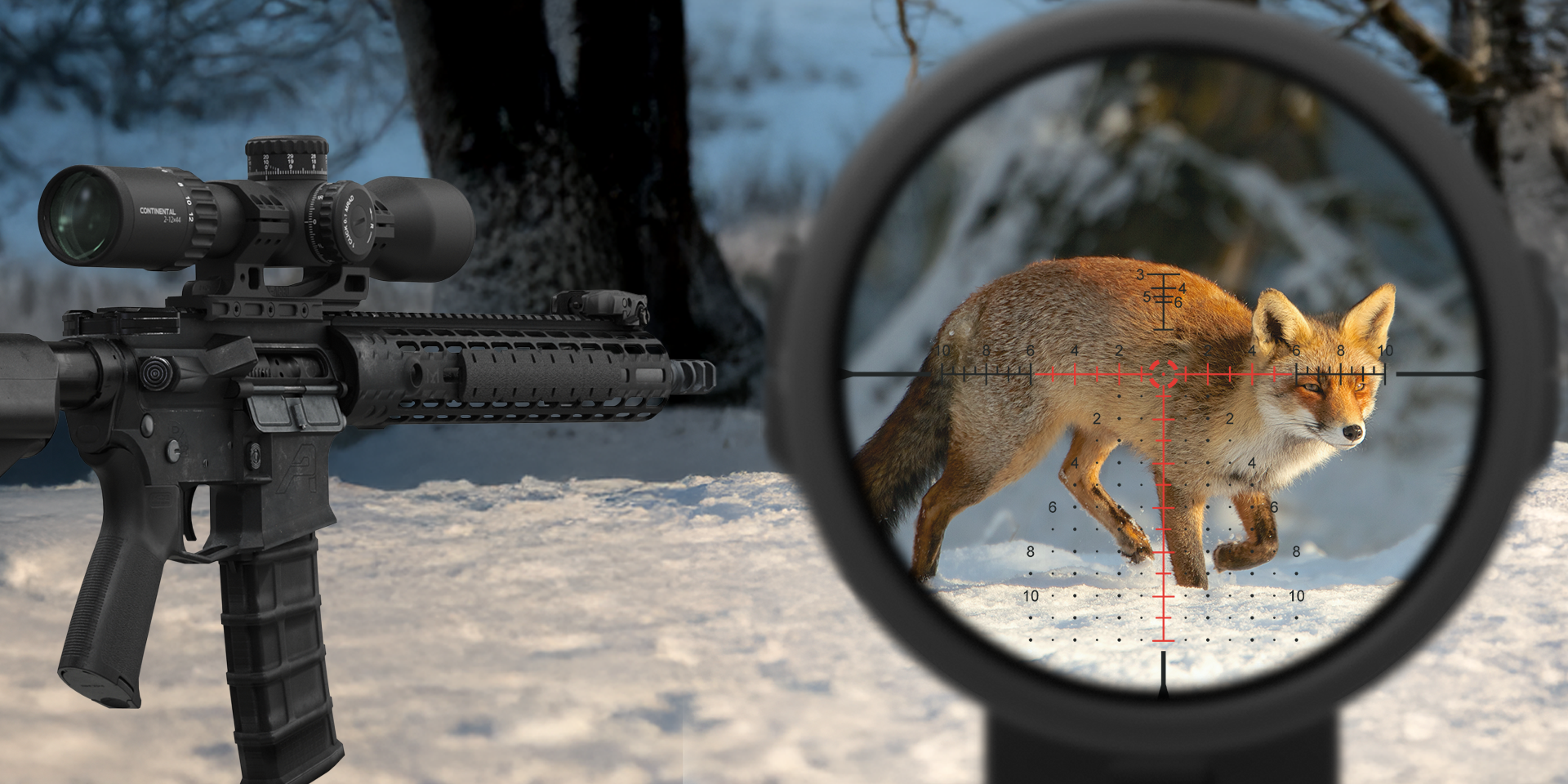
Our trending MPVO, SCFF-67 and SCFF-69, 2-12x44. To learn more about these two scope options, check out our previous blog post.
SCOM-15 2-12x50 possess 90% light transmission BDC
The G4 pattern is designed specifically for hunting, featuring a simple BDC that allows quick close-range shots without the need for turret adjustments.
The SCOM-45 2-16x50 features the same reticle design but offers an even higher 93% light transmission, delivering crystal-clear, vivid images for an enhanced viewing and shooting experience.
The SCOM-47 2.5-15x56 delivers up to 90% light transmission through its large 56mm objective lens, ensuring excellent brightness in low-light conditions. Its G4 reticle with a fiber center dot remains highly visible even under intense sunlight, while the vivid, crystal-clear image quality enhances your overall hunting experience.
Picked based on distance
Within 50 yards – A red dot sight is highly recommended. For recreational shooting, a 3 MOA dot works well across various ranges, while for competition, a 6 MOA dot with a larger window provides faster target acquisition.
50 to 150 yards – An LPVO is the ideal choice, balancing speed and magnification for mid-range shooting.
Over 150 yards – We recommend an MPVO, offering higher magnification and precision for long-range accuracy.
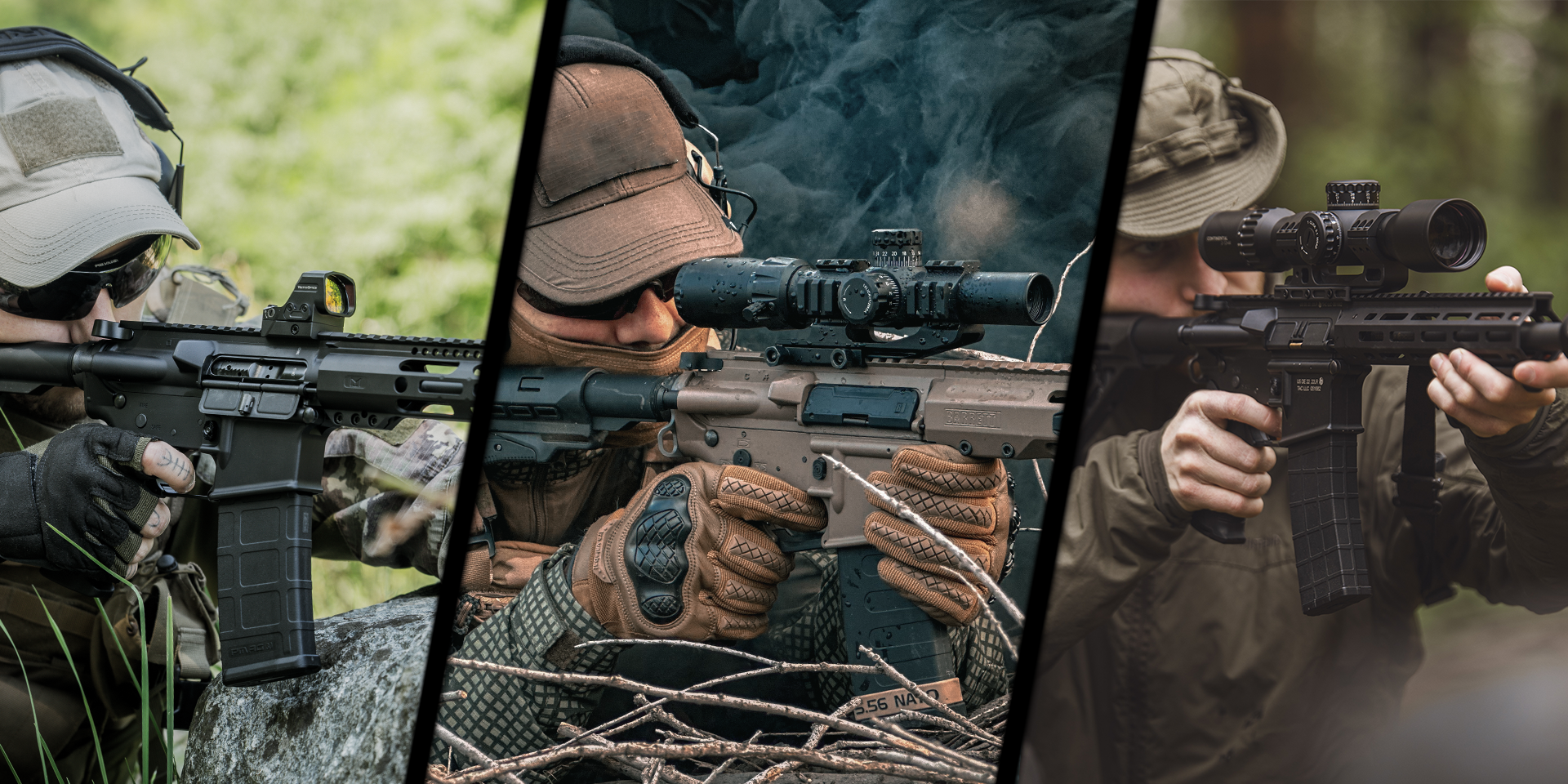
Here i am going to recommend Vector Optics' popular red dots in these days.
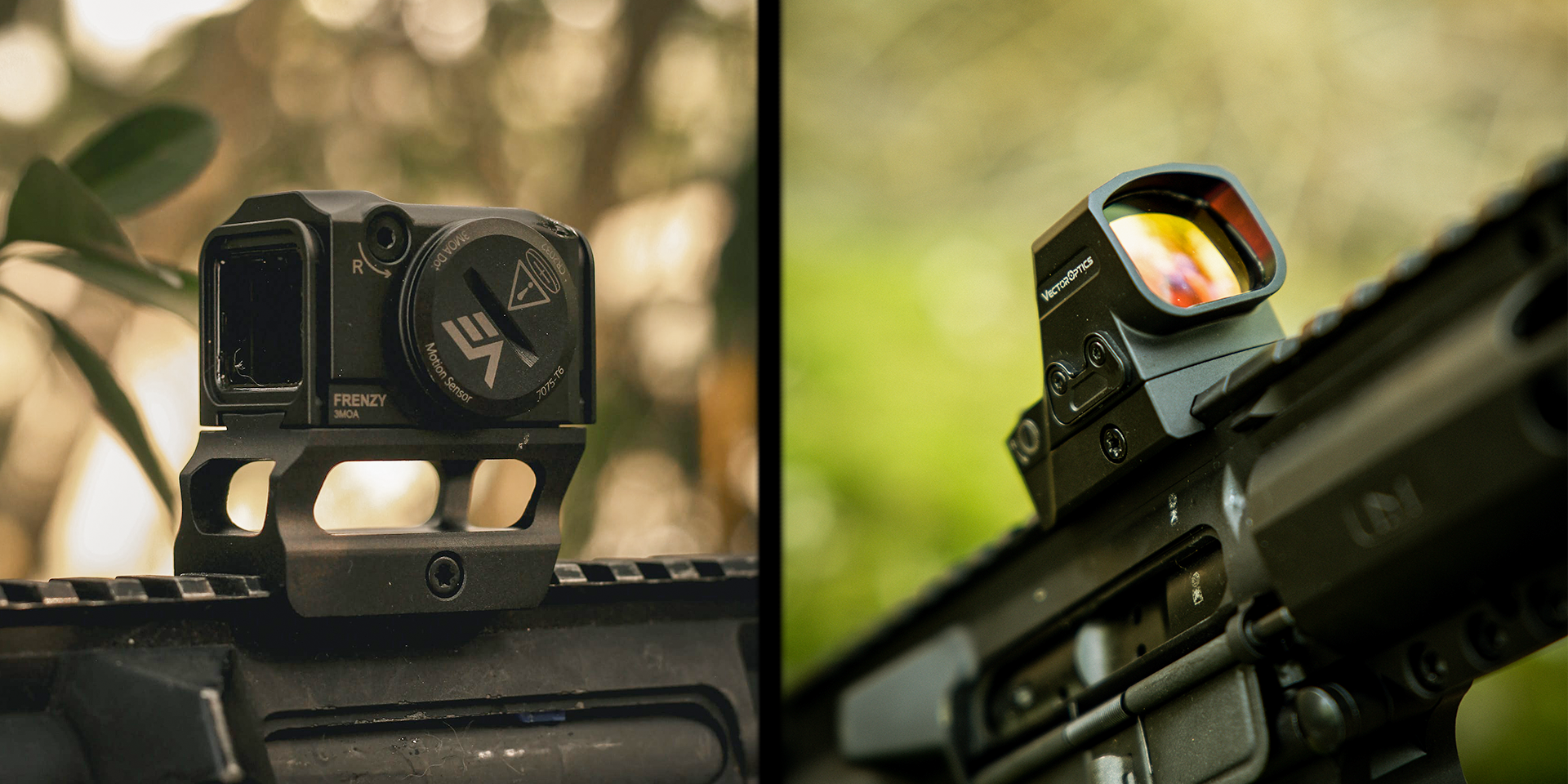
SCRD-75 Frenzy FA Enclosed Red Dot Sight 3MOA with window size of 18x22
Our latest hot-selling red dot features a crisp 3 MOA dot size for precise aiming. Its slim, narrow frame maximizes the field of view without obstructing your vision, making it ideal for intuitive shooting. This design not only speeds up target acquisition but also enhances situational awareness in dynamic environments.
The enclosed design, crafted from 7075-T6 aluminum alloy, greatly enhances durability and ensures reliable performance even in demanding conditions.
SCRD-76 Frenzy Flex Red Dot Sight 6MOA with large window 24x29 MOJ
This red dot sight is designed specifically for competition, featuring a large window and a 6 MOA dot for rapid target acquisition at close range. The tall window design ensures shooters can easily stay on the dot, even during fast-paced, dynamic shooting scenarios.
